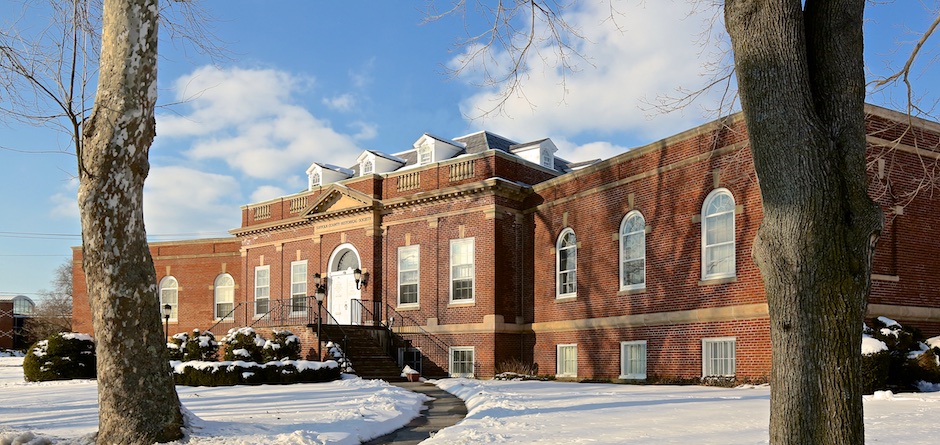
SUFFOLK COUNTY HISTORICAL SOCIETY
~~~~~~~~~~~~~~~~~~~~~~~~~~~~~~~~~~~~~
MEMBERSHIP DRIVE
If you’ve been enjoying our Photo of the Week, please consider becoming a member of SCHS. The Suffolk County Historical Society, founded in 1886, collects and preserves the rich history of Suffolk County and beyond. We offer a history museum, art galleries, a research library and archives, and a multitude of exhibits, programs, and educational lectures and workshops year-round. Our unique collections reflect more than three centuries of Long Island history.
Click here to learn about Member Benefits!
—————————-
From the Civil War to civil rights, revolutions to restorations, spies to Suffragettes, boatbuilders to bootleggers, and whalers to wineries, Long Island’s history comes alive at the Suffolk County Historical Society!
Interested in seeing more historical photos from the Collection of the Suffolk County Historical Society? Spend an afternoon at our Local History Library perusing our extensive archival photography collections. We’re open Weds. – Sat., 12:30 – 4:30 PM.
—————————————————–
Photo of the Week
———- December 12, 2020 ———-
FROM THE SCHS LIBRARY ARCHIVES
“How shall we know it is us without our past?”
– John Steinbeck
BLIZZARD OF 1888
by Wendy Polhemus-Annibell, Head Librarian
Blizzard of 1888, Suffolk Tavern, Patchogue. (From the Vagts Pictorial Collection of the Suffolk County Historical Society Library Archives. Image © copyright Suffolk County Historical Society. All rights reserved.)
The Blizzard of 1888 was a powerful storm that raged for 72 hours in March of that year. Sometimes called the “Great White Hurricane,” the deadly blizzard overwhelmed the Northeast with single-digit temperatures, up to 90 mph winds, and 4-5 feet of snow, ultimately taking the lives of over 400 people.
Long Island was hit hard, with many areas recording nearly 40 inches of snow and two-story-high drifts. The blizzard knocked out telephone and telegraph lines, paralyzed the LIRR, and left people stranded in their homes without access to food. Residents on the eastern end of Long Island were isolated from the outside world, where the snow reportedly extended to the second floor of the Sag Harbor Express building. On Huntington’s Main Street the drifts were 10-15 feet high. A local police order required saloons, such as the Suffolk Tavern in Patchogue pictured here, to stay open all night to shelter stranded men, women, and children who had been caught off-guard by the storm and were unable to reach their homes safely.
~~~~~~~~~~~~~~~~~~~~~~~~~

www.suffolkcountyhistoricalsociety.org
__________________________________
Photo of the Week
———- December 5, 2020 ———-
FROM THE SCHS LIBRARY ARCHIVES
“How shall we know it is us without our past?”
– John Steinbeck
Yaphank School House, c. 1910
by Wendy Polhemus-Annibell, Head Librarian
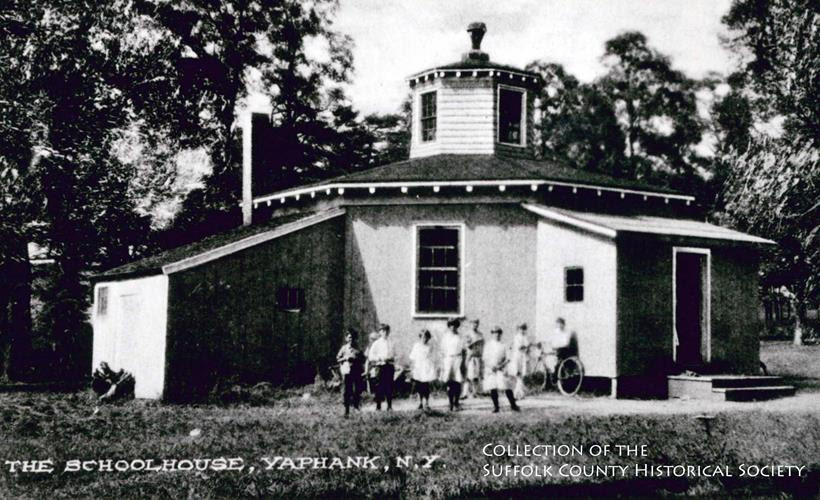 Yaphank School House, c. 1910. (Image from the Collection of the Suffolk County Historical Society Library Archives. Copyright © Suffolk County Historical Society. All rights reserved.)
Yaphank School House, c. 1910. (Image from the Collection of the Suffolk County Historical Society Library Archives. Copyright © Suffolk County Historical Society. All rights reserved.)
This image of school children enjoying recess time outside their octagonal-shaped school house in Yaphank is from the turn of the century. However, the building was built in the mid-1800s, when eight-sided buildings were all the rage. Some still survive on Long Island, in Huntington, Brentwood, and elsewhere. Octagonal-shaped buildings were thought to be good for the health. That notion appears to have come from a nineteenth-century book titled Octagon House: A Home for All, in which author Orson Fowler claimed the increased light and ventilation of the building’s shape contributed to a healthier indoor environment.
Yaphank students referred to their school building as the “Butter Churn” because of its shape. School superintendent William J. Weeks designed the one-room schoolhouse with a cupola for ventilation, a pot-belly stove for heat, and large windows for sufficient lighting. Ada Randall, who taught at the Yaphank school in 1891, provided instruction in reading, writing, arithmetic, and geography for grades 1 through 8.
In 1926, a new school was built in Yaphank, and the old octagon school was moved to a Main Street location a year later. It was painted red and green and became home to the newly formed Yaphank Fire Department. Later on, in 1951, the property was sold and the building was demolished.
Suggested Reading: Yaphank, by Tricia Foley and Karen Mouzakes of the Yaphank Historical Society (Arcadia, 2012).
_____________________________
Photo of the Week
———- November 28, 2020 ———-
FROM THE SCHS LIBRARY ARCHIVES
“How shall we know it is us without our past?”
– John Steinbeck
Montauk Point Lighthouse, c. 1899
by Wendy Polhemus-Annibell, Head Librarian
PHOTO: Montauk Point Lighthouse, c. 1899, by Hal B. Fullerton.(Image from the Harry T. Tuthill Fullerton Collection of the Suffolk County Historical Society Library Archives. Copyright (c) Suffolk County Historical Society. All rights reserved.) [To view Fullerton photo, please visit www.suffolkcountyhistoricalsociety.org]
—————–
The Montauk Point Lighthouse is the oldest lighthouse in New York State and the fourth-oldest active lighthouse in the United States. The lighthouse was authorized by the 2nd U.S. Congress under President George Washington on April 12, 1792. Ezra L’Hommedieu, who had been a member of the Continental Congress, consulted with Washington on the lighthouse construction, which began in June 1796 and was completed by November 5 of that year. Due to prevailing winds in winter, shippers approaching from sea needed a lighthouse at the tip of Long Island to guide them along the south shore into New York Harbor. Today the lighthouse still serves as a navigational aid.
———–
In 2012, Montauk Light was designated a National Historic Landmark by the Secretary of the Interior, in recognition of its significance in the history of the United States.
______________________
Photo of the Week
———- November 21, 2020 ———-
FROM THE SCHS LIBRARY ARCHIVES
“How shall we know it is us without our past?”
– John Steinbeck
A Safe & Happy Thanksgiving
by Wendy Polhemus-Annibell, Head Librarian
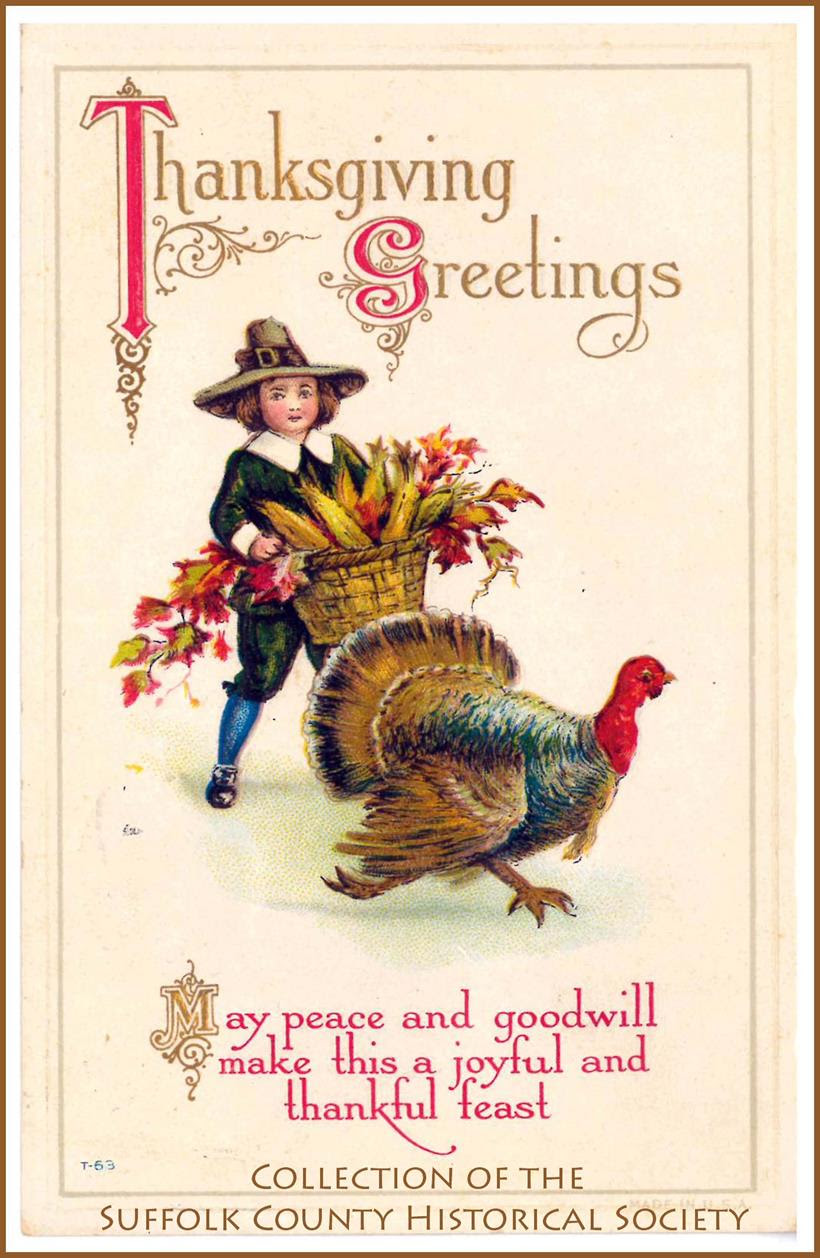
Thanksgiving Greetings Postcard. (Image from the Holiday Postcard Collection of the Suffolk County Historical Society Library Archives.)
_________________________________
Photo of the Week
———- November 14, 2020 ———-
FROM THE SCHS LIBRARY ARCHIVES
“How shall we know it is us without our past?”
– John Steinbeck
Kings Park State Hospital, 1885 – 1996
by Wendy Polhemus-Annibell, Head Librarian

Kings Park State Hospital, 1925. (Image from the Smithtown Pictorial Collection of the Suffolk County Historical Society [176.29.2]. Copyright © Suffolk County Historical Society. All rights reserved.) This photograph by P. Hildenbrand was taken from the top of the power plant’s smokestack, at “215 feet high,” according to the photographer’s notes. In the background are the Nissequogue River and Short Beach.
The Kings Park “Lunatic Asylum” was established in 1885 on 800 acres. The state took over control of the facility in 1895, and the name was changed to Kings Park State Hospital. A self-sufficient farm community was established, providing work for staff members and nurses. In addition, about 70 percent of patients worked various jobs on the hospital grounds. In 1900, the hospital housed nearly 3,000 patients and almost 500 staff members, giving the hospital a larger population than the Town of Smithtown. There were over 150 permanent buildings, including a laundry, bakery, library, nursing school, recreation hall, bandstand, and many repair and construction shops. Kings Park constructed its own railroad spurs in order to bring in coal and supplies from the LIRR line. The LIRR also had a Sunday-only passenger train to and from the grounds of the hospital for visitors. Kings Park State Hospital closed in 1996. Its mentally ill population peaked in the late 1950s with over 9,000 patients.
_________________________________
Photo of the Week
———- November 7, 2020 ———-
FROM THE SCHS LIBRARY ARCHIVES
“How shall we know it is us without our past?”
– John Steinbeck
Suffolk County Elections Board Record Book
by Wendy Polhemus-Annibell, Head Librarian
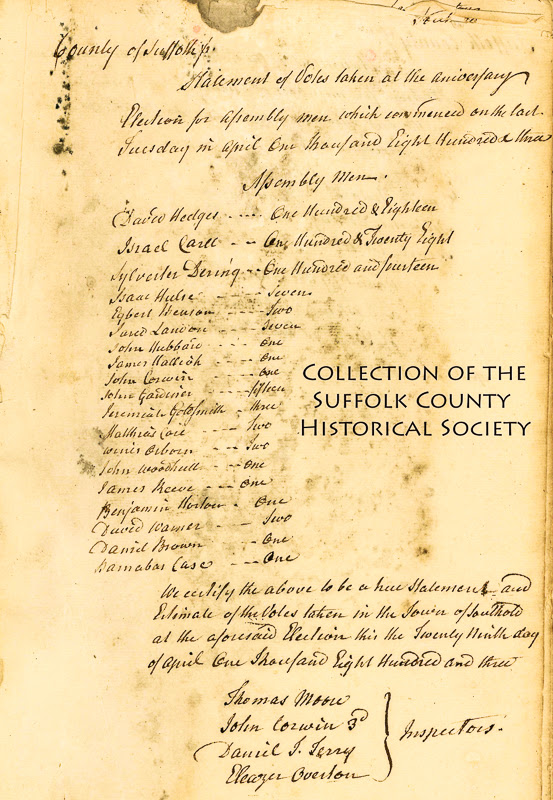
Page from Suffolk County Elections Record Book. (Image from the Collection of the Suffolk County Historical Society Library Archives. Copyright © Suffolk County Historical Society. All rights reserved.)
With this week’s elections taking place in New York and across the nation, we dug out our original Suffolk County Election Records Book, which includes voting records for all of Suffolk County from 1799 to 1817.
On this particular page dated 1803, votes for Suffolk County Assemblymen were recorded in Southold Town. The three top vote-getters in Southold — Israel Carll (an incumbent with 128 votes), David Hedges (118), and Sylvester Dering (114) — went on to win the county-wide election and to serve as Suffolk County’s three allotted Assemblymen. All three candidates were members of the Democratic-Republican Party.
The vote was signed and certified by four Southold Inspectors: Thomas Moore, John Corwin III, Daniel T. Terry, and Eleazer Overton. The State election was held over a three-day period from April 26 to 28, 1803.
__________________________________-
Photo of the Week
———- October 31, 2020 ———-
FROM THE SCHS LIBRARY ARCHIVES
“How shall we know it is us without our past?”
– John Steinbeck
“A Thrilling Hallowe’en” Postcard, c. 1910
by Wendy Polhemus-Annibell, Head Librarian
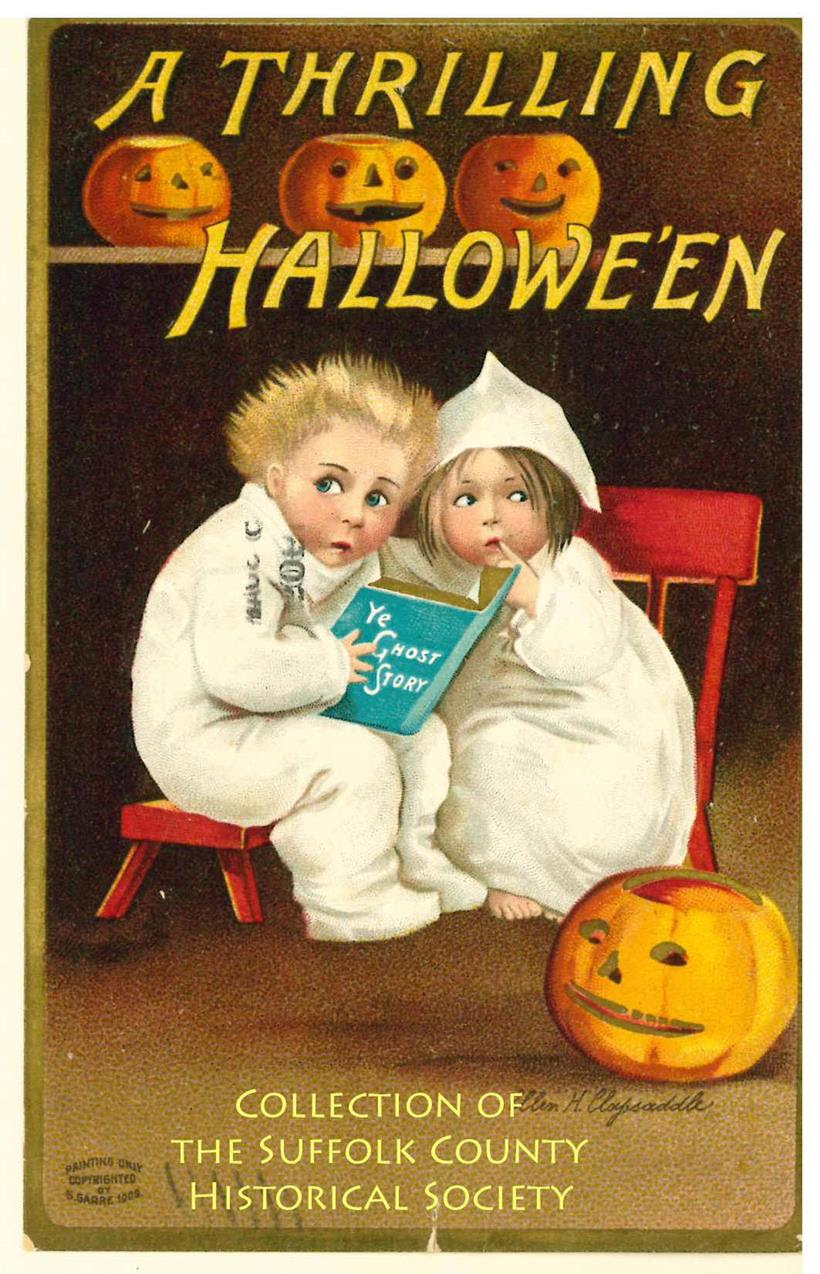
“A Thrilling Halloween” Postcard, c. 1910. (From the Postcard Collection of the Suffolk County Historical Society Library Archives.)
All of our Halloween postcards from the penny-postcard era spell the holiday name as “Hallowe’en” (with an apostrophe between the two vowels). The word’s etymology probably originates with an older name for the holiday, “All Hallows’ Even,” in which “Even” meant “Evening.” The “All” and “s” were dropped, “Hallows’ ” and “Even” became a closed compound, and the apostrophe took the place of the “v,” giving us “Hallowe’en.” Other spellings before “Halloween” included “Hallow-e’en,” “Alhollon Eue,” and “Halhalon evyn.”
______________________________
Photo of the Week
———- October 26, 2020 ———-
FROM THE SCHS LIBRARY ARCHIVES
“How shall we know it is us without our past?”
– John Steinbeck
Fire Department Tournament, Bay Shore, c. 1905
by Wendy Polhemus-Annibell, Head Librarian
Fire Department Tournament, Bay Shore, c. 1905, by Hal B. Fullerton. (From the Harry T. Tuthill Fullerton Collection of the Suffolk County Historical Society Library Archives. Image © Suffolk County Historical Society. All rights reserved.) [To view the Hal B. Fulleton photograph, please visit www.suffolkcountyhistoricalsociety.org.]
A Bay Shore fire department, Hook and Ladder Company No. 1, was organized by volunteers in 1885. John Daggitt was elected foreman. By 1891, the western portion of Bay Shore had formed Penataquit Hose Company with Leonard W. Young as foreman, and the eastern section founded the Bay Shore Hose Company, electing the Rev. Charles Forham as its headman. Rivalries between the two companies were keen, both racing to fires and trying to beat its competitor to the scene. Finally, on January 30, 1891, the Bay Shore Fire Department was incorporated, creating and financing the fire district.
The fire department tournament developed as a major event in the early twentieth century. The Bay Shore Fire Department won so many tournaments that it gained statewide recognition for its speed and efficiency, which brought down fire insurance rates in the immediate area.
Suggested Reading: A Brief History of Bay Shore, by Etta Anderson Tuttle (Author, 1962).
__________________________________
Photo of the Week
———- October 17, 2020 ———-
FROM THE SCHS LIBRARY ARCHIVES
“How shall we know it is us without our past?”
– John Steinbeck
Rum Running, 1925
by Wendy Polhemus-Annibell, Head Librarian
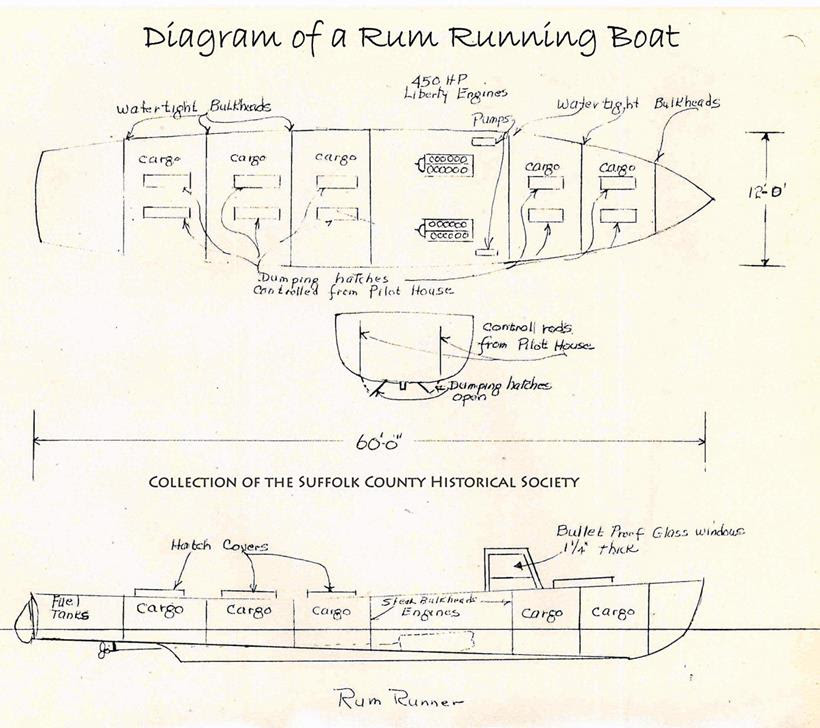
Diagram of a Rum Running Boat. (Diagram found in volume 22 of the Osborne Collection of the Suffolk County Historical Society Library Archives. Artist and date unknown.)
A 1925 newspaper report detailed the indictment of a state trooper and his gang of hijackers for breaking into the Benson estate near Montauk with the intent of stealing $200,000 worth of bootleg liquor being stored at the property. The supposed owner of the contraband, Frank Dickinson, caretaker at the Benson estate, was only fined $500 by Suffolk County officials. Reportedly, he paid the fine, “smiling, from a fat roll of bills, and started out of the courtroom, when he was served with a subpoena and rushed before a federal grand jury charged with the task of finding out who paid him for storing the liquor, who owned the contraband, and about general bootlegging and bribery in Suffolk County.” Rum running was big business on Long Island!
The 18th Amendment to the U.S. Constitution banned the manufacture, transportation, and sale of intoxicating liquors and ushered in a period in American history known as Prohibition that lasted for 13 years (1920-1933). During Prohibition, off the coast of eastern Long Island, there was an area known as Rum Row. Local rum runners would set out in the evening to Rum Row in small boats from the harbors at Greenport and Montauk and other locales in hopes of loading hundreds of cases of contraband. Upon their return, they would evade, outrun, or bribe their way past Coast Guard and local police patrols.
Captain William McCoy is credited with establishing Rum Row, the line of boats that would anchor off the south shore of Long Island. He was known to fill the holds of his schooner with Johnny Walker Red and Bacardi from two small French-owned islands off the coast of Newfoundland. While other rum runners would water down their goods, McCoy had a reputation for fair dealing and quality products–and was thus nicknamed “the Real McCoy.”
____________________________
Photo of the Week
———- October 10, 2020 ———-
FROM THE SCHS LIBRARY ARCHIVES
“How shall we know it is us without our past?”
– John Steinbeck
Chace Map of Suffolk County: Peconic Bay Region
by Wendy Polhemus-Annibell, Head Librarian

Chace Map of Suffolk County: Peconic Bay Region. (Image from the Collection of the Suffolk County Historical Society Library Archives.)
The 1858 Chace Map is one of the finest maps of Suffolk County ever made.The surveys for the map were the work of J. Chace Jr., and the map was published by Robert Pearsall Smith (the cartographer) and John Douglass in 1858.
This monumental map covers Long Island from Huntington to Montauk and Orient Point. Divided into two main sections, upper and lower, the upper section focuses on Huntington, Smithtown, Islip, and Brookhaven (including most of Fire Island and Oak Island). The lower section covers the eastern end of Long Island, including Brookhaven, Riverhead, Southampton, Southold, East Hampton, Gardiner’s Island, and Shelter Island. The map also includes detailed sections for parts of Amityville, East Setauket, Commack, West Huntington, and many other areas.
The extraordinary detail throughout the entire map is especially noteworthy, with Chace’s survey work being the most accurate and in-depth study of the region undertaken in the first half of the nineteenth century. Chace specified roads, farms, bridges, and the individual family names of various properties. In addition to noting property owners and important households, the map includes business directories for the largest and most important towns, as well as engraved views of the Riverhead Courthouse and of prominent homes in Greenport, Scuttle Hole, Good Ground, and Aquebogue. The wall-sized map measures approximately 5 feet wide x 4 feet high.
__________________________
Photo of the Week
———- October 3, 2020 ———-
FROM THE SCHS LIBRARY ARCHIVES
“How shall we know it is us without our past?”
– John Steinbeck
Fire Island Life Saving Station, c. 1848
by Wendy Polhemus-Annibell, Head Librarian
—————-
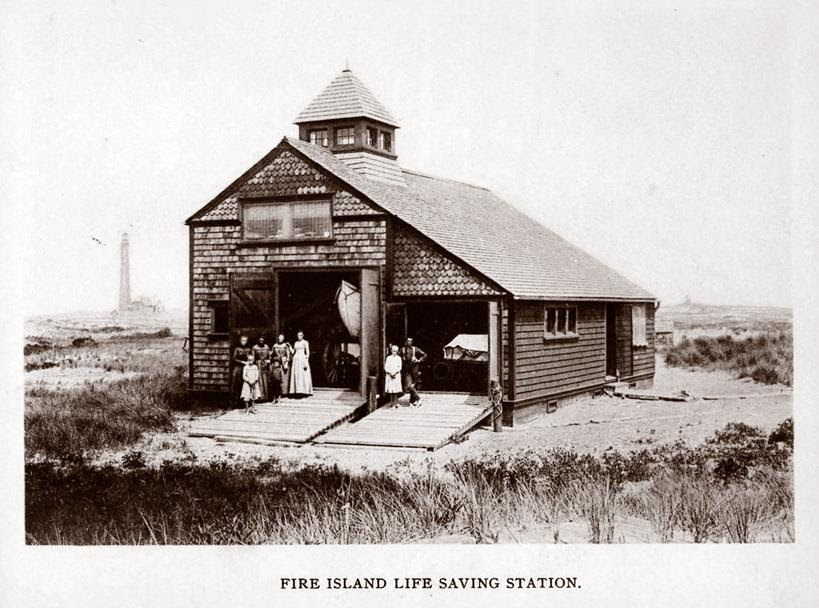
Fire Island Life-Saving Station, with Lighthouse in Background, c. 1880s. (Image from Souvenir of Babylon and Fire Island booklet [1889] in the Collection of the Suffolk County Historical Society Library Archives.)
The first life-saving station on Fire Island was reportedly built in 1848, at the western end of the island, adjacent to the site of the first Fire Island Lighthouse. The second life-saving station was built at Moriches Inlet. By 1854, there were seven stations located at Fire Island, Point O’ Woods, Lone Hill, Blue Point, Bellport, Smith’s Point, and Forge River. These early life-saving stations were run entirely by volunteers. More than 700 ships were rescued off Fire Island between 1871 and 1915, when the newly created United States Coast Guard took control of the stations. In 1871, Congress appropriated money for paid crews at all life-saving stations, and in 1874, the Life Saving Stations Act required boat captains to report all shipwrecks.
Suggested Readings: Fire Island: 1650s-1980s, by Madeleine C. Johnson (Shoreland Press, 1983); Discovering Fire Island, by Bill Perry (National Park Service, 1978); Old Inlet: Fire Island, by Paul Stoutenburg (Author, 1979).
—————————————————–
Photo of the Week
———- September 19, 2020 ———-
FROM THE SCHS LIBRARY ARCHIVES
“How shall we know it is us without our past?”
– John Steinbeck
Haunted Hallways: Hair Wreaths, c. 1850s
by Wendy Polhemus-Annibell, Head Librarian
—————-
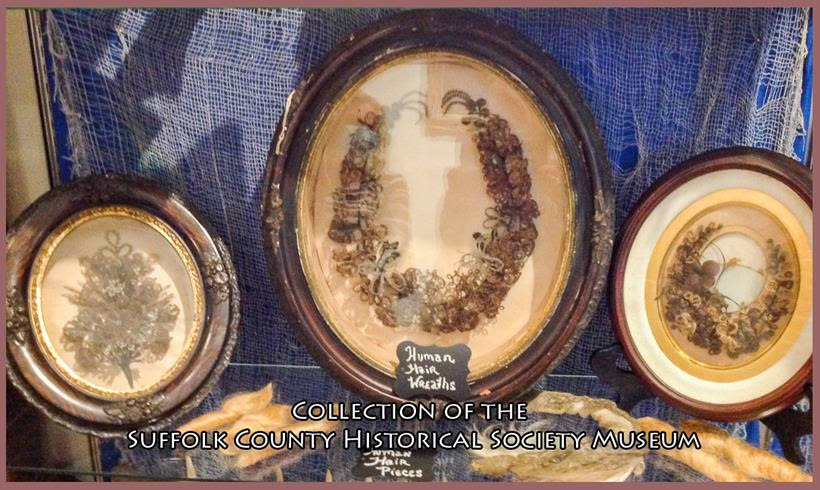
Hair Wreaths, c. 1850s. (From the Collection of the Suffolk County Historical Society Museum. Image Copyright © Suffolk County Historical Society. All rights reserved.)
Displayed in our newly installed exhibit, Haunted Hallway: A Collection of Creepy Curiosities, is something known as a hair wreath. These hair wreaths from our museum collection were created in about the mid-nineteenth century, and belonged to local families. Hair wreaths were formed by “stitching” human hair with fine wire over a rod, forming a series of loops that could be formed into flowerlike shapes. The art of making hair wreaths was practiced during the Victorian age as a memorial for lost loved ones. Hair was considered something tangible by which to remember a loved one. Friends would even exchange locks of hair and keep them in jewelry boxes. Not all hair wreaths were made as memorials, however. Some larger hair wreaths were the result of community projects and would include hair from an entire group, school, or family.
Come visit our new Haunted Hallway exhibit…if you dare! With curious artifacts ranging from coffins to murder weapons, our creepiest curiosities will have you looking over your shoulder as you meander the museum’s historic galleries! On exhibit in our History in the Hall display cases now through November 7, 2020. Gallery Hours: Wednesday to Saturday, 10:00 am – 4:30 pm.
————————

ATTENTION RIVERHEAD BASEBALL FANS!
The Suffolk County Historical Society is seeking your memories and photographs of the Riverhead Stadium (also known as Wivchar Stadium) that opened on Harrison Avenue on Memorial Day weekend 1949. Please contact us at librarian@schs-museum.org or 631-727-2881 x103. Thank you!
—————————————————–
Photo of the Week
———- September 12, 2020 ———-
FROM THE SCHS LIBRARY ARCHIVES
“How shall we know it is us without our past?”
– John Steinbeck
Aquebogue / Origin of Its Name
by Wendy Polhemus-Annibell, Head Librarian
—————-
Inlet and Meadows at Aquebogue, 1898, with Steeple Church in upper left, by Hal B. Fullerton. (From the Harry T. Tuthill Fullerton Collection of the Suffolk County Historical Society Library Archives. Image Copyright © Suffolk County Historical Society. All rights reserved.) [To view Hal B. Fullerton photograph, please visit www.suffolkcountyhistoricalsociety.org]
In the upper-left corner of this magnificent photograph of the inlet and meadows at Aquebogue, taken by Hal B. Fullerton in 1898, one can see the steeple of the historic Old Steeple Church. Aquebogue is a hamlet in Riverhead Town located about three miles east of downtown Riverhead. The hamlet includes land and meadows on the north side of Peconic Bay. These meadows were considered very valuable by the early European settlers. The place name first appears in two Indian deeds of 1648, but variations on the name were numerous: Occabock, Occobauk, Agabake, Ocquebank, Ahkobauk, Ackqueboug, Acquobouke, Hauquebaug, Occaquabauk, etc. With all these variations, the name resolved itself into Acque-baug, or Aquebogue, meaning “the end of the water place” or “head of the bay.”
——————————-

ATTENTION RIVERHEAD BASEBALL FANS!
The Suffolk County Historical Society is seeking your memories and photographs of the Riverhead Stadium (also known as Wivchar Stadium) that opened on Harrison Avenue on Memorial Day weekend 1949. Please contact us at librarian@schs-museum.org or 631-727-2881 x103. Thank you!
—————————————————–
Photo of the Week
———- September 5, 2020 ———-
FROM THE SCHS LIBRARY ARCHIVES
“How shall we know it is us without our past?”
– John Steinbeck
Labor Day Holiday, 1894
by Wendy Polhemus-Annibell, Head Librarian
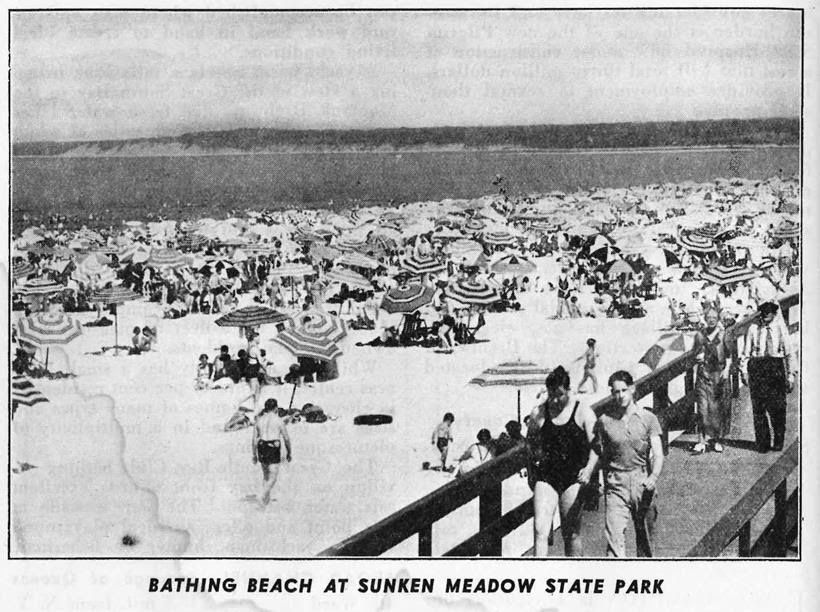
Bathing Beach at Sunken Meadow State Park, 1937. (From “This Is Long Island: The Sunrise Homeland,” published by the Long Island Association, NYC, 1937.)
What is the origin of Labor Day as a holiday? Observed on the first Monday in September, Labor Day pays tribute to the contributions and achievements of American workers. It was created by the labor movement in the late nineteenth century and became a federal holiday in 1894. On Long Island, the holiday also marks the unofficial end of the summer season.
The Suffolk County Historical Society wishes all of our friends and followers a happy and safe Labor Day weekend.
Holiday Closure: We will be closed on Saturday, Sept. 5, 2020, for the holiday weekend, and will reopen on Wednesday, Sept. 9 at 10:00 a.m.

ATTENTION RIVERHEAD BASEBALL FANS!
The Suffolk County Historical Society is seeking your memories and photographs of the Riverhead Stadium (also known as Wivchar Stadium) that opened on Harrison Avenue on Memorial Day weekend 1949. Please contact us at librarian@schs-museum.org or 631-727-2881 x103. Thank you!
**************
—————————————————–
Photo of the Week
———- August 29, 2020 ———-
FROM THE SCHS LIBRARY ARCHIVES
“How shall we know it is us without our past?”
– John Steinbeck
Riverhead Baseball Team, c. 1908
by Wendy Polhemus-Annibell, Head Librarian

Riverhead Baseball Team, c. 1908. (From the Collection of the Suffolk County Historical Society Library Archives. Copyright Suffolk County Historical Society. All rights reserved.)
Baseball’s popularity as a national pastime spread across Long Island in the years following the Civil War, when it was a game played primarily at county fairs and in farmers’ fields. One of the earliest games recorded in Suffolk County was played at the Suffolk County Fair in Greenport in 1867, when the well-known Huntington Suffolks won the prized Silver Ball. Another well-known team in Suffolk, the Hawkins Nine from Ronkonkoma, played from the 1890s to 1935 and included six Hawkins brothers: Samuel, Morris, E. Stansbury, Ernest, Charles, and Richard.
Leo Fishel (1877-1960) of Babylon played for a number of Suffolk County teams. He was one of the first players in the county to make it to Major League Baseball and was the first Jewish pitcher in the majors. In 1899, when Fishel was attending Columbia University, the New York Giants requested him to pitch against the Cleveland Indians. Although Fishel lost his only major league game, he did strike out six batters and even got a hit for his team.
Some other early Suffolk County baseball teams included the Oregons from Mattituck, the Babylon Seniors, the Project Nines from Bay Shore, the St. James Nines, the Riverhead Nines, and the Old Field Club, among others.

ATTENTION RIVERHEAD BASEBALL FANS!
The Suffolk County Historical Society is seeking your memories and photographs of the Riverhead Stadium (also known as Wivchar Stadium) that opened on Harrison Avenue on Memorial Day weekend 1949. Please contact us at librarian@schs-museum.org or 631-727-2881 x103. Thank you!
******************************************
Visit: www.suffolkcountyhistoricalsociety.org
To View 2014 Photo of the Week pages click here.
To View 2015 Photo of the Week pages click here.
To View 2016 Photo of the Week pages click here.
To View 2017 Photo of the Week pages click here.
To View 2018 Photo of the Week pages click here.
To View 2019 Photo of the Week pages click here.
~~~~~~~~~~~~~~~~~~~~~~~~~~~~~~~~~~~~~~~~
Photo of the Week
———- August 22, 2020 ———-
FROM THE SCHS LIBRARY ARCHIVES
“How shall we know it is us without our past?”
– John Steinbeck
19th Amendment / Women’s Suffrage
by Wendy Polhemus-Annibell, Head Librarian
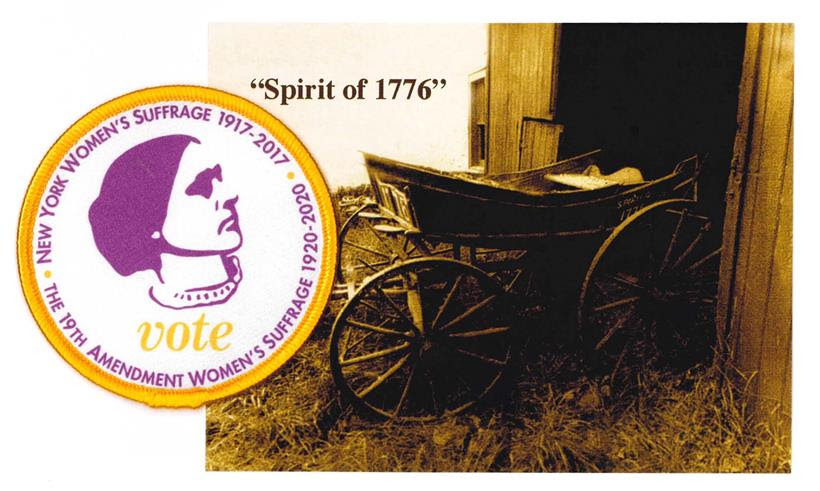
Suffrage Badge & L.I. Suffrage Wagon. From the Collection of the Suffolk County Historical Society Library Archives.)
Suffrage (noun): the right to vote in political elections.
————–
19th Amendment to the U.S. Constitution (1920):
“The right of citizens of the United States to vote
shall not be denied or abridged by the United States
or by any state on account of sex.
Congress shall have power to enforce this
article by appropriate legislation.”————–
August 2020 marks the 100th anniversary of the passage of the 19th Amendment, guaranteeing and protecting women’s constitutional right to vote across the nation. New York women won suffrage rights three years earlier, in 1917, with the passage of a statewide referendum. In Suffolk County, Riverhead and Shelter Island were the only towns to cast majority votes against the suffrage amendment, while the other eight towns–Southold, East Hampton, Southampton, Brookhaven, Islip, Smithtown, Huntington, and Babylon–all voted in favor of granting New York women the right to vote. Statewide, the referendum was approved by male voters by a margin of 53.92 percent to 46.08 percent.
The horse-drawn “Spirit of 1776” campaign wagon shown here was a suffrage-movement symbol of patriotic protest on Long Island and in New York City. In 1913, the Brooklyn carriage company I.S. Remson donated the wagon to the New York State Woman Suffrage Association. It was subsequently used in suffrage parades and at organizing events. Today the historic wagon is in the collection of the New York State Museum in Albany.
******************************************
Visit: www.suffolkcountyhistoricalsociety.org
To View 2014 Photo of the Week pages click here.
To View 2015 Photo of the Week pages click here.
To View 2016 Photo of the Week pages click here.
To View 2017 Photo of the Week pages click here.
To View 2018 Photo of the Week pages click here.
To View 2019 Photo of the Week pages click here.
~~~~~~~~~~~~~~~~~~~~~~~~~~~~~~~~~~~~~~~~
Photo of the Week
———- August 15, 2020 ———-
FROM THE SCHS LIBRARY ARCHIVES
“How shall we know it is us without our past?”
– John Steinbeck
The Famous Long Island Potato
by Wendy Polhemus-Annibell, Head Librarian

The Famous Long Island Potato (on a Long Island Railroad Train). (Postcard from the Riverhead Pictorial Collection of the Suffolk County Historical Society Library Archives. Image copyright © Suffolk County Historical Society. All rights reserved.)
Long Island has a long history with potatoes dating back to the 1800s. Potato production peaked in the late 1940s with over 70,000 acres grown on the island by many hundreds of potato farmers. Due to the heavy potato production on Long Island, in 1963 the Potato Association of America held its 50th Anniversary celebration at the Henry Perkins Hotel in Riverhead.
Long Island horticulturalist Edith Loring Fullerton explained in How to Make a Vegetable Garden (Doubleday, 1905) that the best potato crop is obtained by planting sections of the potato that have three eyes, but that “some Englishmen argue the finest crop comes from planting whole, medium-sized tubers.” She experimented with both methods in the early 1900s at the LIRR’s experimental farms in Wading River and Medford, finding that “the whole potatoes sent up more shoots five days sooner, were handsomer, and equally as strong as those from the cut sections.” However, the yield from the cut potatoes was 35 pounds versus only 28 pounds for the whole tubers (both were planted in short rows of equal length). The average size was nearly equal, but the whole tubers yielded ripe potatoes almost two weeks sooner than the cut sections.
Favorite potato varieties on Long Island at the turn of the twentieth century were Green Mountain, Rural New Yorker, Early Rose, and Gold Coin.
******************************************
Visit: www.suffolkcountyhistoricalsociety.org
To View 2014 Photo of the Week pages click here.
To View 2015 Photo of the Week pages click here.
To View 2016 Photo of the Week pages click here.
To View 2017 Photo of the Week pages click here.
To View 2018 Photo of the Week pages click here.
To View 2019 Photo of the Week pages click here.
~~~~~~~~~~~~~~~~~~~~~~~~~~~~~~~~~~~~~~~~
Photo of the Week
———- August 1, 2020 ———-
FROM THE SCHS LIBRARY ARCHIVES
“How shall we know it is us without our past?”
– John Steinbeck
———-
Montauk Lighthous & Wainscott Mill, c. 1922
by Wendy Polhemus-Annibell, Head Librarian

Montauk Lighthouse with Wainscott Mill in foreground, c. 1922. (From the Collection of the Suffolk County Historical Society Library Archives. Image © copyright Suffolk Couny Historical Society. All rights reserved.)
Montauk Light was the first lighthouse built in New York State and is the fourth-oldest active lighthouse in the United States. Construction of the lighthouse was authorized by the 2nd U.S. Congress, under President George Washington, on April 12, 1792, and was completed on November 5, 1796. Ezra L’Hommedieu, who had been a member of the Continental Congress, consulted with President Washington on the lighthouse construction. Due to prevailing winds in winter, shippers approaching from sea needed a lighthouse at the tip of Long Island to guide them along the south shore into New York Harbor.
Mill at Montauk Point: In the foreground of this photograph from our East Hampton Pictorial Collection is the summer home of U.S. Representative Lathrop Brown (1922). The windmill portion of the home was built in Southampton in 1813 and moved to Wainscott in 1852; it was thereafter moved by Mr. Brown to Montauk Point in 1922. When the Brown property and other properties in Montauk were taken over by the U.S. government during World War II, the Mill at Montauk Point was returned to Wainscott. One of eleven surviving eighteenth- and early nineteenth-century wind-powered mills on Long Island, the Wainscott Windmill was added to the National Historic Register in 1978.
Surviving centuries of time, historic wooden windmills built by skilled artisans and reminiscent of old-time England dot the landscape of Suffolk County’s East End. Few of this style of windmill remain in the United States; in fact, local historians claim that Long Island holds the largest number of windmills of this type in any one place. The windmills found on our historic island were constructed in the “smock mill” style, so-called because their skirted design resembles a baker’s smock.
INFO SOURCES: Jeannette Edwards Rattray, The Old Hook Mill and Other Old English Windmills of East Hampton (Village of East Hampton, 1942); vertical file, undated newspaper clippings.
******************************************
Visit: www.suffolkcountyhistoricalsociety.org
To View 2014 Photo of the Week pages click here.
To View 2015 Photo of the Week pages click here.
To View 2016 Photo of the Week pages click here.
To View 2017 Photo of the Week pages click here.
To View 2018 Photo of the Week pages click here.
To View 2019 Photo of the Week pages click here.
~~~~~~~~~~~~~~~~~~~~~~~~~~~~~~~~~~~~~~~~
Photo of the Week
———- JULY 25, 2020 ———-
FROM THE SCHS LIBRARY ARCHIVES
“How shall we know it is us without our past?”
– John Steinbeck
———-
August H. Galow, Architect
by Wendy Polhemus-Annibell, Head Librarian

Huntington High School Baseball Team, 1911. (From the Collection of the Suffolk County Historical Society Library Archive. Image copyright © Suffolk County Historical Society. All rights reserved.)
Team members: Simpson, Latham, Hurd, Sammis, Underhill, Trainer, Shakeshaft, Conklin,
August H. Galow (team captain), Norden, Grumman, Ketcha, and Ott.
————————————–

August H. Galow
A World War I veteran who served in the
U.S. Navy, Galow (shown here at age 25)
worked with some of the foremost architects in
New York City between 1917
and 1925 while also practicing in
Huntington and establishing
his own firm. Galow’s architectural
achievements on Long Island include the
Suffolk County Historical Society building,
the Huntington Hotel, the Henry Perkins Hotel,
and numerous schools and residences in
Suffolk and Nassau Counties.
******************************************
Visit: www.suffolkcountyhistoricalsociety.org
To View 2014 Photo of the Week pages click here.
To View 2015 Photo of the Week pages click here.
To View 2016 Photo of the Week pages click here.
To View 2017 Photo of the Week pages click here.
To View 2018 Photo of the Week pages click here.
To View 2019 Photo of the Week pages click here.
~~~~~~~~~~~~~~~~~~~~~~~~~~~~~~~~~~~~~~~~
________________________
Photo of the Week
———- JULY 18, 2020 ———-
FROM THE SCHS LIBRARY ARCHIVES
“How shall we know it is us without our past?”
– John Steinbeck
———-
Dove / Torr Cottage, Centerport
by Wendy Polhemus-Annibell, Head Librarian
—–
Cottage on Banks of Titus Mill Pond, Centerport, c. 1904, by Hal B. Fullerton. (Image from the Harry T. Tuthill Fullerton Collection of the Suffolk County Historical Society Library Archives. Copyright © Suffolk County Historical Society. All rights reserved.) [NOTE: to view Fullerton photograph, please visit SCHS website.]
Interestingly, the cottage depicted on the pond in this 1904 photograph by noted Long Island photographer Hal B. Fullerton would later become the home of American artists Arthur Dove and Helen Torr. Earlier (1880-1890) the cottage had been used as a post office and a general store. The Dove/Torr Cottage, as it was later known, was home to the renowned American modernist Arthur Dove, who lived in Huntington with his wife, the artist Helen Torr, from 1924 to 1946. For many of these years, they lived aboard their 42-foot yawl in Huntington Harbor. In 1938, the couple purchased this cottage, where they lived for the rest of their lives.
In 1998, the Heckscher Museum of Art acquired the Dove/Torr Cottage, and two years later the cottage was one of only twenty historic artist sites in the nation to be accepted into the Historic Artists’ Homes and Studios program administered by the National Trust for Historic Preservation. For more information about the historic Dove/Torr Cottage, check out the Heckscher’s information page here.
******************************************
Visit: www.suffolkcountyhistoricalsociety.org
To View 2014 Photo of the Week pages click here.
To View 2015 Photo of the Week pages click here.
To View 2016 Photo of the Week pages click here.
To View 2017 Photo of the Week pages click here.
To View 2018 Photo of the Week pages click here.
To View 2019 Photo of the Week pages click here.
~~~~~~~~~~~~~~~~~~~~~~~~~~~~~~~~~~~~~~~~
Photo of the Week
———- JULY 11, 2020 ———-
FROM THE SCHS LIBRARY ARCHIVES
“How shall we know it is us without our past?”
– John Steinbeck
———-
Camp Dunes: Lake-by-the-Sea, Peconic, c. 1920s
by Wendy Polhemus-Annibell, Head Librarian
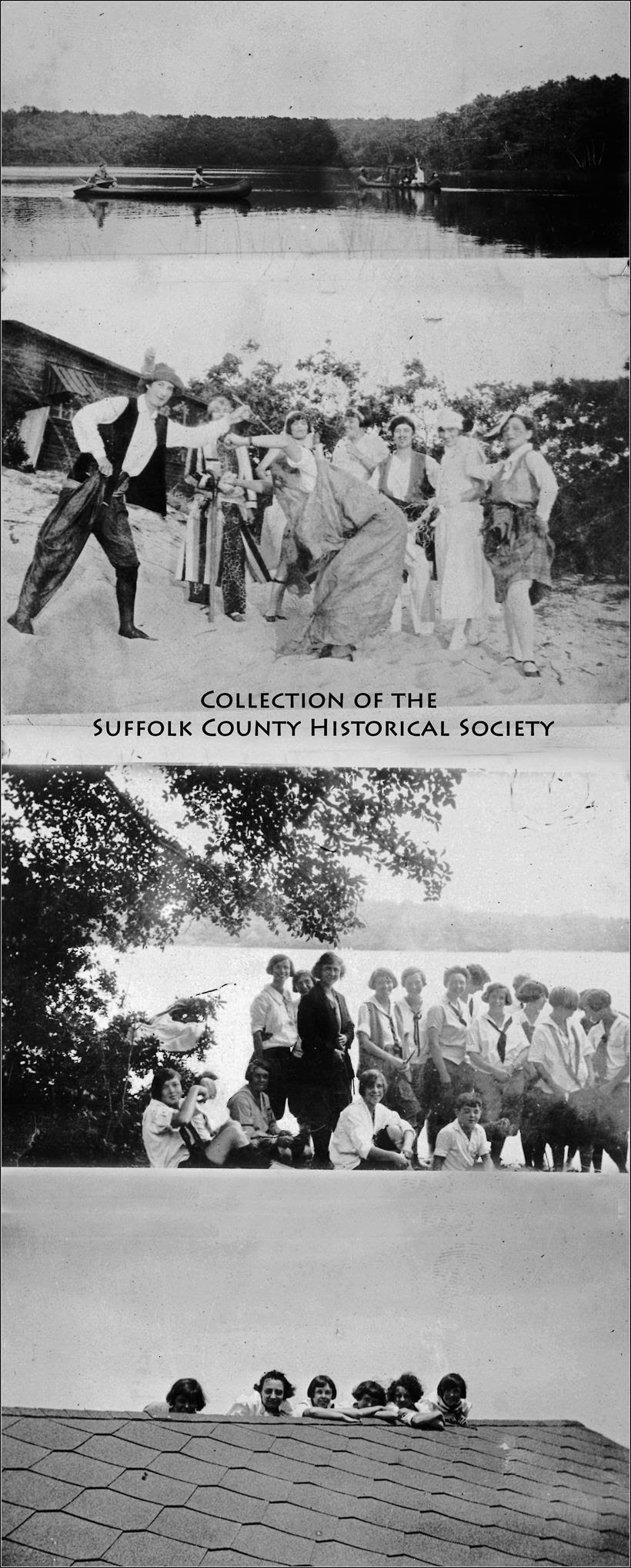
Camp Dunes: Lake-by-the-Sea, Peconic, Long Island, c. 1920s. ”For Girls Fourteen to Eighteen Years of Age, Camp Season: July 1 – August 27.” (Image collage from the Collection of the Suffolk County Historical Society Library Archives. Copyright © Suffolk County Historical Society. All rights reserved.)
Camp Dunes was located on over twenty-six acres on the Long Island Sound and included access to Great Pond Lake. The camp was owned and operated by Luvia Willard, M.D., of Jamaica, NY (who also owned a home on Great Pond Lake); Marian Wood of Philadelphia was co-director. The rate was $150 for eight weeks of summer camp, according to a 1924 ad in the Long Island Daily Press. Food for the camp was purchased from neighboring farms and village markets, and the female campgoers engaged in various activities during their stay: swimming, boating, play-acting, and the like – as this series of images from an extensive photo album in our collection depicts.
“The maritime climate together with the unusual amount of sunshine peculiar to this locality make for an unusually healthful environment. The Geodetic Survey shows that the region around Peconic, Long Island, averages to the year one hundred days more sunshine than New York City,” notes a Camp Dunes brochure in our collection, which also features this poem:
Far from the city’s maddening din,
Out where the Sunrise Trails begin,
Where the toes of the dunes are kissed by the sea,
Is a camp that seems just made for me.
Where the birches dress in their silvery white,
And gnarled oaks squirm in sheer delight,
Where tall pines frame a sapphire sea,
Is a camp that seems just made for me.
There are hill camps, and lake camps, and camps by the sea,
But there’s only one camp by the lake and the sea.

******************************************
Visit: www.suffolkcountyhistoricalsociety.org
To View 2014 Photo of the Week pages click here.
To View 2015 Photo of the Week pages click here.
To View 2016 Photo of the Week pages click here.
To View 2017 Photo of the Week pages click here.
To View 2018 Photo of the Week pages click here.
To View 2019 Photo of the Week pages click here.
~~~~~~~~~~~~~~~~~~~~~~~~~~~~~~~~~~~~~~~~
Photo of the Week
———- JULY 4, 2020 ———-
FROM THE SCHS LIBRARY ARCHIVES
“How shall we know it is us without our past?”
– John Steinbeck
———-
HAPPY FOURTH OF JULY / POSTCARD
by Wendy Polhemus-Annibell, Head Librarian
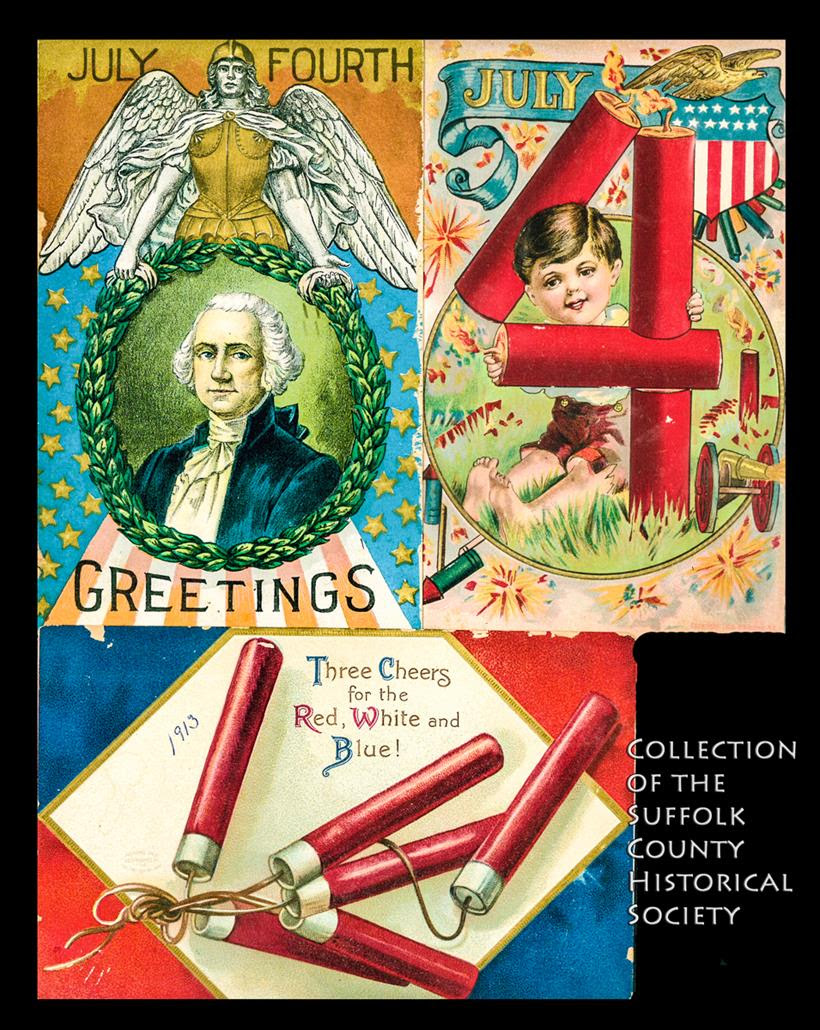
“Three Cheers for the Red, White, and Blue!” Assorted July Fourth Holiday Postcards from the early 1900s. (From the Collection of the Suffolk County Historical Society Library Archives. Image copyright © Suffolk County Historical Society. All rights reserved.)
On July 4, 1776, the thirteen colonies claimed their independence from England, an event that eventually led to the formation of the United States of America. Each year on July 4th, also known as Independence Day, Americans celebrate this historic event.

******************************************
Visit: www.suffolkcountyhistoricalsociety.org
To View 2014 Photo of the Week pages click here.
To View 2015 Photo of the Week pages click here.
To View 2016 Photo of the Week pages click here.
To View 2017 Photo of the Week pages click here.
To View 2018 Photo of the Week pages click here.
To View 2019 Photo of the Week pages click here.
~~~~~~~~~~~~~~~~~~~~~~~~~~~~~~~~~~~~~~~~
Photo of the Week
———- JUNE 27, 2020 ———-
FROM THE SCHS LIBRARY ARCHIVES
“How shall we know it is us without our past?”
– John Steinbeck
———-
Summertime at Avery’s Beach, Blue Point, c. 1912
by Wendy Polhemus-Annibell, Head Librarian
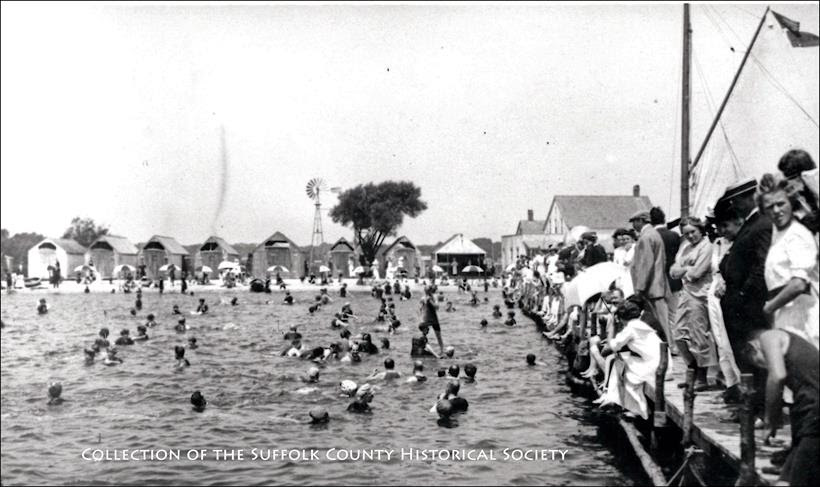
Summertime at Avery’s Beach, Great South Bay, Blue Point, circa 1912. (Image from the Brookhaven Pictorial Collection of the Suffolk County Historical Society Library Archives. Copyright © Suffolk County Historical Society. All rights reserved.) Avery’s Dock, also known as Five Mile Look, was built in the early twentieth century and was destroyed by fire in 1939.
—–
The name “Blue Point” may have been first used by seventeenth-century baymen who noticed a distinct blue haze over this point of land that juts out into the Great South Bay. Some claim that the name dates back to when local Native Americans made wampum from the blue chips of the seashells found here.
In 1752, Humphrey Avery of Connecticut purchased the Blue Point and Patchogue areas from John Still Winthrop for £2600. In the early nineteenth century, Blue Point was rural and sparsely populated; most residents were farmers or baymen. There was no schoolhouse, post office, railroad, fire department, or churches at this time. Robust wild oysters were found in the local waters. As everywhere else, Blue Point oysters didn’t last long as New York City quickly devoured them. In 1824, the Gazetteer of NY State was referring to “Bluepoints” in the past tense.
By the turn of the twentieth century, Blue Point underwent major changes – two churches were built, the railroad added a depot, and the resort era began.

******************************************
Visit: www.suffolkcountyhistoricalsociety.org
To View 2014 Photo of the Week pages click here.
To View 2015 Photo of the Week pages click here.
To View 2016 Photo of the Week pages click here.
To View 2017 Photo of the Week pages click here.
To View 2018 Photo of the Week pages click here.
To View 2019 Photo of the Week pages click here.
~~~~~~~~~~~~~~~~~~~~~~~~~~~~~~~~~~~~~~~~
—————————————————–
Photo of the Week
———- JUNE 20, 2020 ———-
FROM THE SCHS LIBRARY ARCHIVES
“How shall we know it is us without our past?”
– John Steinbeck
———-
East Moriches Eagle, 1923, by Theophilus Brouwer
by Wendy Polhemus-Annibell, Head Librarian
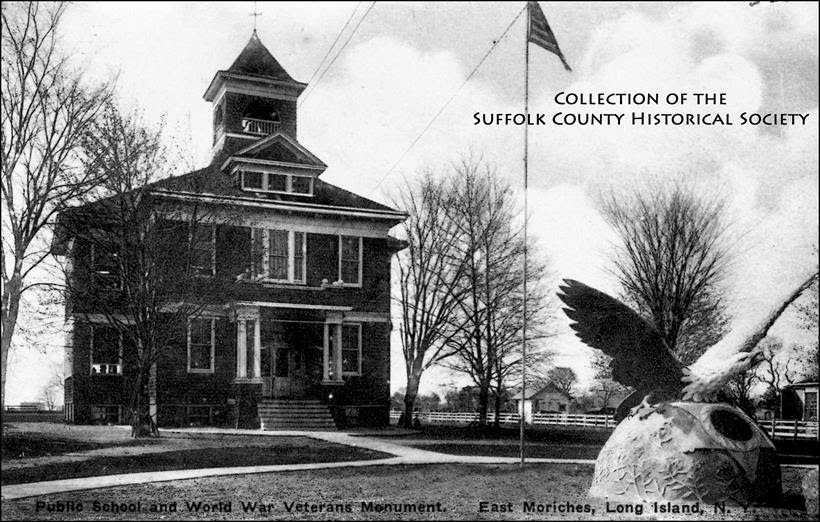
The East Moriches Eagle, 1923. (Image from the East Moriches Postcard Collection of the Suffolk County HIstorical Society Library Archives.)
One of the most unique landmarks in the Moriches area is the large statue on the front lawn of the old East Moriches School. A memorial for World War I, the East Moriches Eagle was erected in 1923 to honor those from East Moriches who served in that war.
Mayhew Tower, a member of the East Moriches Board of Education, headed the committee in charge of erecting a distinctive war memorial. It was largely through his efforts that $500 was raised and then awarded to Theophilus Brouwer, a well-known sculptor from Westhampton, to create the memorial. The half globe mound and huge eagle were carved on the spot by Brouwer. A bronze plaque was fitted on the front of the memorial, below the claws of the eagle, in the design of the Congressional Medal of Honor. On this tablet are engraved the names of the 21 men and 2 women of East Moriches who fought or aided the sick and wounded during the First World War.
INFO. SOURCE: Strolling Through Old East Moriches, by Members of the Catherine D. Afterman Chapter of the National Junior Honor Society of the East Moriches School, 1975. This book was gratefully dedicated to Mr. Harry W. Huson, Principal of the East Moriches School (1930-1967), Educator, Historian, and friend of all young people of East Moriches.

******************************************
Visit: www.suffolkcountyhistoricalsociety.org
To View 2014 Photo of the Week pages click here.
To View 2015 Photo of the Week pages click here.
To View 2016 Photo of the Week pages click here.
To View 2017 Photo of the Week pages click here.
To View 2018 Photo of the Week pages click here.
To View 2019 Photo of the Week pages click here.
~~~~~~~~~~~~~~~~~~~~~~~~~~~~~~~~~~~~~~~~
—————————————————–
Photo of the Week
———- JUNE 13, 2020 ———-
FROM THE SCHS LIBRARY ARCHIVES
“How shall we know it is us without our past?”
– John Steinbeck
———-
JOHN ELLIOT ALDRICH, BUILDER OF ‘COSTLY COUNTRY HOMES’
by Wendy Polhemus-Annibell, Head Librarian

Miller Place Rail Road Station, 1910. (Image from the Brookhaven Pictorial Collection of the Suffolk County Historical Society Library Archives. Copyright © Suffolk County Historical Society. All rights reserved.)
The land that Miller Place occupies today was purchased from the Setalcott Indians in 1664 by settlers of Setauket. The parcel also included what would become Mount Sinai. The first known dwelling in the area was constructed in the 1660s by Captain John Scott, though we do not know who occupied the home. Located on the eastern side of Mount Sinai Harbor, the home was one of several dwellings commissioned by Scott.
While the original settler of Miller Place is unknown, the settling of the region is accredited to the original Miller family. In 1679, an East Hampton settler named Andrew Miller purchased a 30-acre plot. Miller was a cooper by profession, and records indicate that he had emigrated from either England or Scotland.
By the early 1700s, the community had become known as Miller’s Place. The Miller family expanded well into the eighteenth century and continually developed houses in the northern part of the hamlet. The Millers were in time joined by members of such families as the Helmes, Robinsons, Burnetts, Hawkins, Woodhulls, and Thomases, among others. Many roads in the present-day hamlet of Miller Place are named after the area’s historic families.

******************************************
Visit: www.suffolkcountyhistoricalsociety.org
To View 2014 Photo of the Week pages click here.
To View 2015 Photo of the Week pages click here.
To View 2016 Photo of the Week pages click here.
To View 2017 Photo of the Week pages click here.
To View 2018 Photo of the Week pages click here.
To View 2019 Photo of the Week pages click here.
~~~~~~~~~~~~~~~~~~~~~~~~~~~~~~~~~~~~~~~~
—————————————————–
Photo of the Week
———- MAY 30, 2020 ———-
FROM THE SCHS LIBRARY ARCHIVES
“How shall we know it is us without our past?”
– John Steinbeck
———-
Suffolk County Seal
by Wendy Polhemus-Annibell, Head Librarian
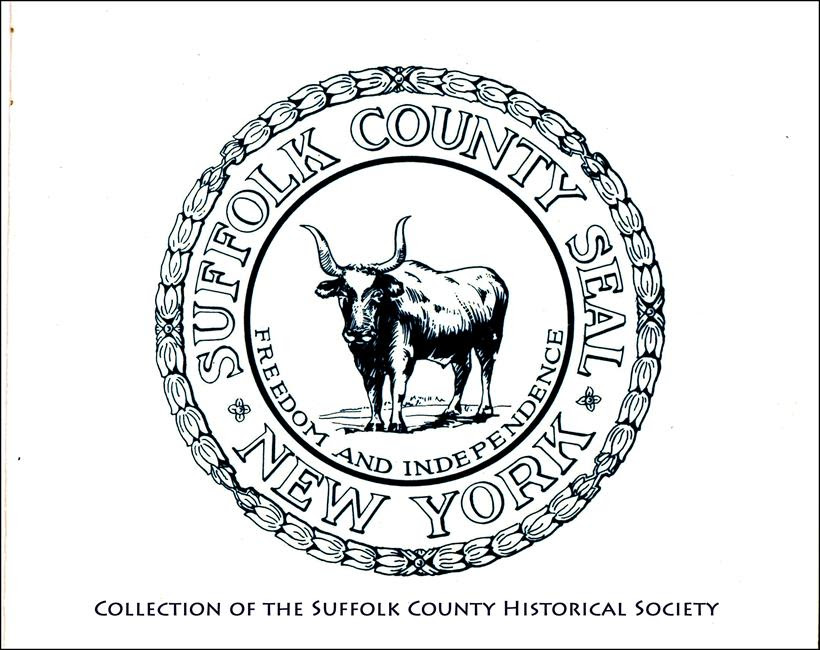
Suffolk County Seal, 1784 (reproduction). (From the Collection of the Suffolk County Historical Society Library Archives.)
Suffolk County was founded in 1683. The first version of the Suffolk County Seal was made in 1784 by Elias Pelletreau, a noted Southampton silversmith and an ancestor of Judge Robert S. Pelletreau, a Surrogate of Suffolk County for many years. Elias Pelletreau noted in an account book that he was instructed by the Suffolk County Board of Supervisors to “make a seal for Suffolk County…the bigness of a half-dollar…in the figure of an ox. Motto–‘Suffolk County Seal–Freedom and Independence’ with a socket on the top for a handle.” This seal was delivered to County Clerk Ezra L’Hommedieu, who paid for it and was reimbursed in the sum of two pounds by the Board of Supervisors in 1784. The whereabouts of the original seal by Pelletreau are unknown today.
In 1913, a certificate was filed with the Secretary of State and the Suffolk County Clerk (who is the official custodian of the county seal), indicating that a new seal would be made and be represented by a wreath within a circle accompanied by the words “Suffolk County Seal.” In 1938, however, the Board of Supervisors ordered the County Historian, Morton Pennypacker, to redesign the seal by reverting back to the original seal containing the figure of an ox. There is no official explanation of the symbolism behind the ox, though it’s often been claimed that it represents Suffolk County’s agricultural heritage.
Suggested Readings: The Great Seal of the State of New York, the Seal of Suffolk County, and the Seals of the Ten Towns, compiled by George L. Weeks Jr., the Suffolk County Historian, in cooperation with the Town Historians and the Suffolk County Historical Society, 1976. “History of the Suffolk County Seal,” by Ruth S. Hague, Deputy Clerk, Suffolk County Board of Supervisors, 1960.

******************************************
Visit: www.suffolkcountyhistoricalsociety.org
To View 2014 Photo of the Week pages click here.
To View 2015 Photo of the Week pages click here.
To View 2016 Photo of the Week pages click here.
To View 2017 Photo of the Week pages click here.
To View 2018 Photo of the Week pages click here.
To View 2019 Photo of the Week pages click here.
~~~~~~~~~~~~~~~~~~~~~~~~~~~~~~~~~~~~~~~~
—————————————————–
Photo of the Week
———- MAY 30, 2020 ———-
FROM THE SCHS LIBRARY ARCHIVES
“How shall we know it is us without our past?”
– John Steinbeck
———-
JOHN ELLIOT ALDRICH, BUILDER OF ‘COSTLY COUNTRY HOMES’
by Wendy Polhemus-Annibell, Head Librarian
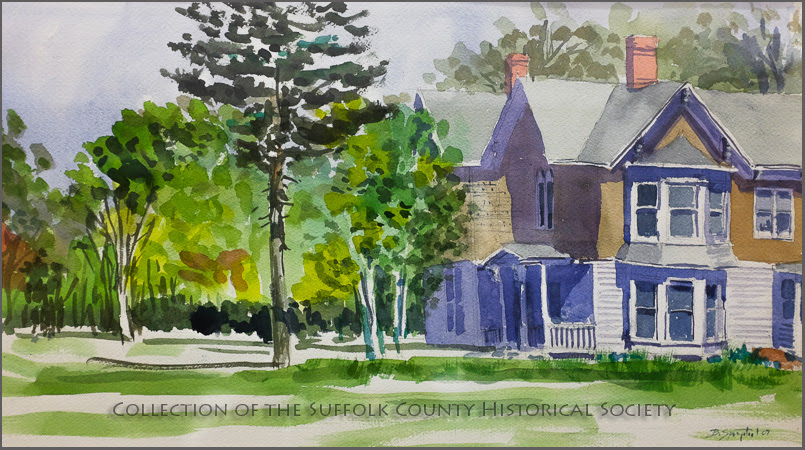
Double Bays, Watercolor, by Bernard Springsteel. (From the Museum Collection of the Suffolk County Historical Society. Image copyright © Suffolk County Historical Society. All rights reserved.)
In this lovely watercolor painting by Suffolk County artist Bernie Springsteel titled Double Bays, we see the artist’s rendition of the historic Aldrich house that stood on Main Road in Aquebogue. The home was demolished about five years ago, in the summer of 2015 (see news story here). In spite of the structure’s deterioration over the years, its never-fading beauty hinted to passersby that this nearly 145-year-old house was at one time a work of architectural wonder. That’s because it was built by local master carpenter John Elliot Aldrich in the early 1870s, a celebrated builder of “costly country homes.”
Aldrich was born in Riverhead on March 22, 1842. His name appears in the Civil War Draft Registration Records (1863-1865), where he reported his age as 21, his profession as “carpenter,” and his location as “Upper Aquebogue.” He married Frances Fournier of Southampton in 1867, and together they had four children. According to an 1890 article in the Long-Islander, Mr. Aldrich was “doing business on a large scale,” contracting “to build thirty-five houses of various kinds from Flushing to Sag Harbor.” Mr. Aldrich died in 1906 and is buried in the Aquebogue Cemetery, not far from where the magnificent Main Road home depicted here stood from the 1870s to 2015.

******************************************
Visit: www.suffolkcountyhistoricalsociety.org
To View 2014 Photo of the Week pages click here.
To View 2015 Photo of the Week pages click here.
To View 2016 Photo of the Week pages click here.
To View 2017 Photo of the Week pages click here.
To View 2018 Photo of the Week pages click here.
To View 2019 Photo of the Week pages click here.
~~~~~~~~~~~~~~~~~~~~~~~~~~~~~~~~~~~~~~~~
~~~~~~~~~~~~~~~~~~~~~~~~~~~
Photo of the Week
———- MAY 23, 2020 ———-
FROM THE SCHS LIBRARY ARCHIVES
“How shall we know it is us without our past?”
– John Steinbeck
———-
FIRE ISLAND COASTAL FORT, WORLD WAR ERA
by Wendy Polhemus-Annibell, Head Librarian
~~~~~~~~~~~~~~~~~~~~~~~~~~~

On Memorial Day,
we commemorate our brave soldiers
who sacrificed their lives for our freedom.
Fishers Island Coastal Fort: World War I Era, 13th Regiment of Brooklyn. (Image from the Collection of the Suffolk County Historical Society Library Archives. Copyright © Suffolk County Historical Society. All rights reserved.)
~~~~~~~~~~~~~~~~~~~~~~~~~~~
Fort H. G. Wright, begun in 1898, was a U.S. military installation on Fishers Island that was active during the first and second world wars. Named for Union General Horatio G. Wright (1820-1899), the coastal fort guarded the passage into Long Island Sound from the Connecticut shoreline to Great Gull Island, It was linked with Fort Terry, Fort Michie, and Camp Hero. By World War II, the fort had a small airfield. It was decommissioned in 1948.
The Brooklyn Daily Eagle reported in 1926 that Brooklyn’s 13th Regiment held “one of the most picturesque and impressive review ceremonies in the history of the famous command at Fort H. G. Wright. Generals Charles P. Summerall and Georges A. L. Dumont took the salute of the marching Brooklyn guardsmen. The review of the regiment by the generals culminated a week of formal military pageantry.”
—————-
SUGGESTED READING: The Coastal Forts of Eastern Long Island, by Ruth Ann Bramson, Geoffrey K. Fleming, & Amy K. Folk.
~~~~~~~~~~~~~~~~~~~~~~~~~~~~~~~~~~~~~

—————–
******************************************
Visit: www.suffolkcountyhistoricalsociety.org
To View 2014 Photo of the Week pages click here.
To View 2015 Photo of the Week pages click here.
To View 2016 Photo of the Week pages click here.
To View 2017 Photo of the Week pages click here.
To View 2018 Photo of the Week pages click here.
To View 2019 Photo of the Week pages click here.
~~~~~~~~~~~~~~~~~~~~~~~~~~~~~~~~~~~~~~~~
Photo of the Week
———- UPDATE MAY 16, 2020 ———-
FROM THE SCHS LIBRARY ARCHIVES
“How shall we know it is us without our past?”
– John Steinbeck
———-
FIRE ISLAND LIFE SAVING STATION, 1908
by Wendy Polhemus-Annibell, Head Librarian
~~~~~~~~~~~~~~~~~~~~~~~~~~~
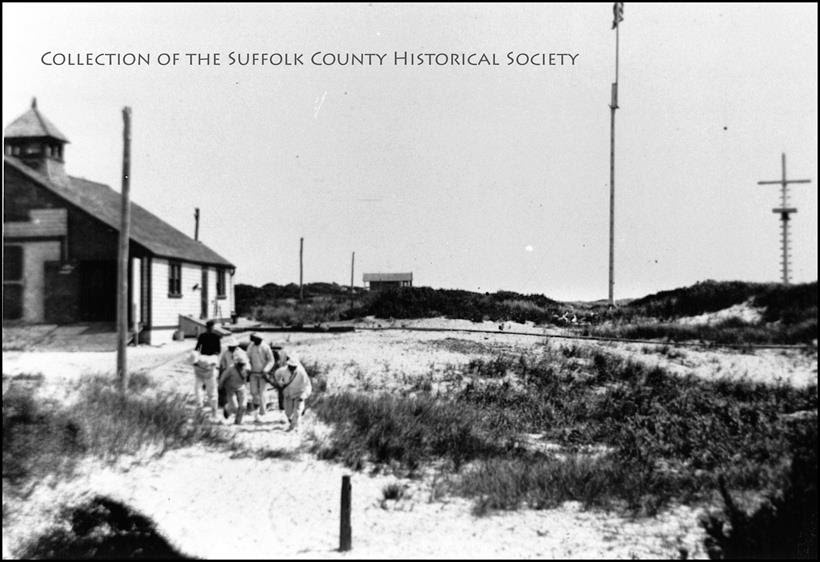
Fire Island Life Saving Station, 1908. A life-saving crew begins a drill at the station on August 31, 1908. (Image from Collection of the Suffolk County Historical Society Library Archives. Copyright © Suffolk County Historical Society. All rights reserved.)
“The sea worked on the piles of rubble and as the glaciers melted and ran off to the south they formed Long Island, with rocks on the North Shore and sand on the South Shore. This all adds up to that ‘littoral drift’ along the South Shore, forming what we now know as Fire Island.”
– Paul Stoutenburgh, Old Inlet: Fire Island
The first life-saving station on Fire Island was built in 1848, at the western end of the island, adjacent to the site of the first Fire Island Lighthouse. The second life-saving station was built at Moriches Inlet. By 1854, there were seven stations located at Fire Island, Point O’ Woods, Lone Hill, Blue Point, Bellport, Smith’s Point, and Forge River.
These early life-saving stations were run entirely by volunteers. Local baymen and farmers lived at the stations from October until May to patrol the coastline for stranded ships and perform rescues when needed. Known as Surfmen, the volunteers’ motto was “You must go out, but you don’t have to come back.” They patrolled the beach on foot every night, from sunset until sunrise, looking for shipwrecks. When a stranded ship was sighted, the volunteer crew performed a rescue using a buoy with lines and pulleys. A small cannon was used to shoot a projectile, or weight, carrying a light line out to the ship. Although very simple, this method was used to rescue over 7,000 people from more than 700 ships off Fire Island from 1871 to 1915, when the newly created U.S. Coast Guard took control of the stations.
In 1871, Congress appropriated money for paid crews at all life-saving stations, and in 1874, the Life Saving Stations Act required boat captains to report all shipwrecks.
SUGGESTED READINGS: Fire Island: 1650s-1980s, by Madeleine C. Johnson (Shoreland Press, 1983); Discovering Fire Island, by Bill Perry (National Park Service, 1978); Old Inlet: Fire Island, by Paul Stoutenburg (Author, 1979).

******************************************
Visit: www.suffolkcountyhistoricalsociety.org
To View 2014 Photo of the Week pages click here.
To View 2015 Photo of the Week pages click here.
To View 2016 Photo of the Week pages click here.
To View 2017 Photo of the Week pages click here.
To View 2018 Photo of the Week pages click here.
To View 2019 Photo of the Week pages click here.
~~~~~~~~~~~~~~~~~~~~~~~~~~~~~~~~~~~~~~~~
————
Photo of the Week
———- UPDATE MAY 9, 2020 ———-
FROM THE SCHS LIBRARY ARCHIVES
“How shall we know it is us without our past?”
– John Steinbeck
———-
LONG DOCK & CLIFTON HOTEL, PATCHOGUE
by Wendy Polhemus-Annibell, Head Librarian
—————
Photo: Long Dock, Patchogue, c. 1898, by Hal B. Fullerton. (Image from the Harry T. Tuthill Fullerton Collection of the Suffolk County Historical Society Library Archives. Copyright © Suffolk County Historical Society. All rights reserved.) [To View Fullerton photo, please visit SCHS website.]
~~~~~~~~~~~~~~~~~~~~~
As we wonder what summer 2020 on Long Island will be like in the midst of the coronavirus pandemic, this week’s historic image from the SCHS library archives features a long dock on the majestic Patchogue waterfront circa 1898. At the turn of the twentieth century, Patchogue was in fact a major tourist area with many hotels and boarding houses offering over 1,600 beds to guests from New York City and beyond. With the arrival of train service in Patchogue in 1869, New Yorkers could escape the hot, crowded city for a relaxing weekend on the cool shores of the Great South Bay located just 56 miles from the city.
The Clifton Hotel, located at the foot of Bay Avenue on the Great South Bay, was built in 1882; it was expanded in 1892 and 1896, doubling in size to accommodate the area’s booming tourism industry.
~~~~~~~~~~~~~~~~~~~~~

Clifton Hotel, Patchogue.
Surrounding the Clifton were 10 acres of lawns, flower gardens, trees, and fascinating bay views. Guests enjoyed 600 feet of shorefront, a sandy beach, a 500-foot private pier, a 1/3-mile-long boardwalk promenade, and 3,000 square feet of veranda overlooking the bay. There were also a casino, a pool, an indoor bowling alley, 120 bath houses, a sun deck, and an Australian swimming pool! Yachts could be hired out for excursions on the bay or for travel to Fire Island and ocean beaches. Boats could be hired for gunning parties and fishing trips.
It’s no wonder they called Patchogue the “Queen City” of Long Island’s South Shore!
~~~~~~~~~~~~~~~~~~~~~

—————–
******************************************
Visit: www.suffolkcountyhistoricalsociety.org
To View 2014 Photo of the Week pages click here.
To View 2015 Photo of the Week pages click here.
To View 2016 Photo of the Week pages click here.
To View 2017 Photo of the Week pages click here.
To View 2018 Photo of the Week pages click here.
To View 2019 Photo of the Week pages click here.
~~~~~~~~~~~~~~~~~~~~~~~~~~~~~~~~~~~~~~~~
—————————————————–
Photo of the Week
———- UPDATE APRIL 25, 2020 ———-
FROM THE SCHS LIBRARY ARCHIVES
“How shall we know it is us without our past?”
– John Steinbeck
———-
PORT JEFFERSON BOAT STOREHOUSE
And HORSE WINCH, 1897
by Wendy Polhemus-Annibell, Head Librarian
—————
Port Jefferson Boat Storehouse and Horse Winch, 1897. (Image from the Harry T. Tuthill Fullerton Collection of the Suffolk County Historical Society Library Archives. Copyright © Suffolk County Historical Society. All rights reserved.) [To View Fullerton Photo, please visit www.suffolkcountyhistoricalsociety.org]
——-
The village of Port Jefferson, originally called Drowned Meadow because the tidal area was “drowned” by the tide twice daily, was among the largest shipbuilding centers in Suffolk County in the nineteenth century. With the natural superiority of its protected harbor, the village also engaged in some of the earliest shipbuilding in the entire country.
By 1840, shipyards and marine railways were to be found in almost every village located along the shores of Long Island. By 1855, some twenty-five shipyards were in operation in the county. Men of all ages toiled in seafaring professions–nearly a third of the male population in Suffolk County was so engaged by 1885. More than 800 boats had been built in Suffolk County by that time, and 327 of those vessels were constructed in Port Jefferson.
To learn more about the photographer Hal B. Fullerton and the SCHS collection of Fullerton’s photographs, click on the New York Times article title cited below.
INFO. SOURCE: Gordon Welles and William Proios, Port Jefferson: Story of a Village (Port Jefferson, NY: Port Jefferson Historical Society, 1977).
———————-
Hal B. Fullerton: Crisp Images from a Faded Long Island Past”
The New York Times | May 3, 2013
“Mr. Fullerton was a great documenter of Long Island, but he was also a great photographer.” — Neil Scholl, Professor Emeritus, New York Institute of Technology
“Anyone interested in exploring the visual landscape of Long Island’s past will find the photographs of Hal B. Fullerton…immensely valuable. Fullerton’s work was so extensive, inclusive, and pervasive that it is difficult to imagine the Island’s appearance at the turn of the twentieth century without conjuring up his pictures.”
—Charles L. Sachs, The Blessed Isle

—————–
******************************************
Visit: www.suffolkcountyhistoricalsociety.org
To View 2014 Photo of the Week pages click here.
To View 2015 Photo of the Week pages click here.
To View 2016 Photo of the Week pages click here.
To View 2017 Photo of the Week pages click here.
To View 2018 Photo of the Week pages click here.
To View 2019 Photo of the Week pages click here.
~~~~~~~~~~~~~~~~~~~~~~~~~~~~~~~~~~~~~~~~
—————————————————–
Photo of the Week
———- UPDATE APRIL 18, 2020 ———-
FROM THE SCHS LIBRARY ARCHIVES
“How shall we know it is us without our past?”
– John Steinbeck
———-
Old Peconic Railroad Station, c. 1920s
by Wendy Polhemus-Annibell, Head Librarian

The Old Peconic Railroad Station, c. 1920s. (From the Collection of the Suffolk County Historical Society Library Archives. Copyright © Suffolk County Historical Society. All rights reserved.)
The hamlet of Peconic, originally known as Hermitage, had a railroad station as early as the 1840s along the Greenport LIRR line. The station built on the south side of the tracks also served as the post office, where Frank H. Overton and James B. Fanning served as postmasters. The station house is no longer standing, and the LIRR discontinued the Peconic stop in the 1970s.
Located on the North Fork between Cutchogue and Southold, early Peconic was home to the Old Grist Mill at Goldsmith Inlet and to a row of retired whaling captains on its Main Road, including the well-known Capt. Henry Green, who in his retirement years became a Peconic farmer. The hamlet also has the distinction (sometimes shared with Cutchogue) of being the place in New York State with the greatest number of sunny days.

—————–
******************************************
Visit: www.suffolkcountyhistoricalsociety.org
To View 2014 Photo of the Week pages click here.
To View 2015 Photo of the Week pages click here.
To View 2016 Photo of the Week pages click here.
To View 2017 Photo of the Week pages click here.
To View 2018 Photo of the Week pages click here.
To View 2019 Photo of the Week pages click here.
~~~~~~~~~~~~~~~~~~~~~~~~~~~~~~~~~~~~~~~~
Photo of the Week
———- UPDATE APRIL 9, 2020 ———-
FROM THE SCHS LIBRARY ARCHIVES
“How shall we know it is us without our past?”
– John Steinbeck
—————–
WORLD WAR I MONUMENT, Riverhead, 1920
by Wendy Polhemus-Annibell, Head Librarian
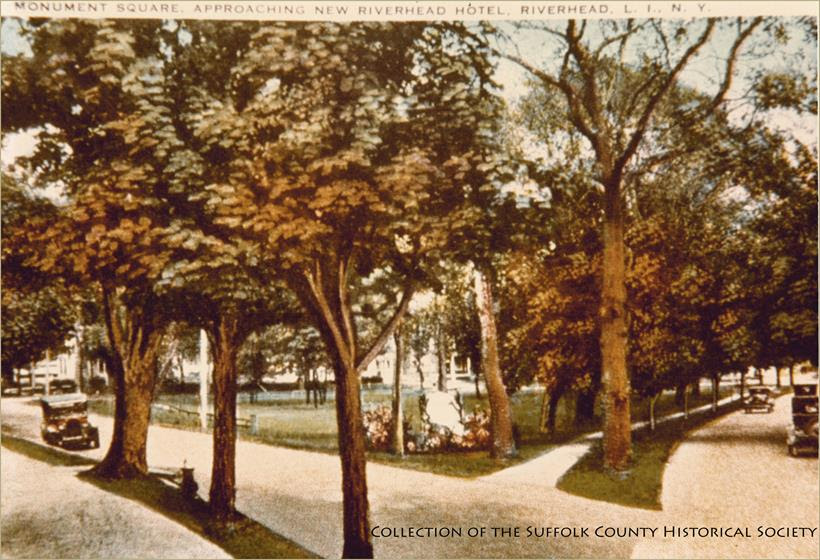
World War I Monument, Riverhead, 1920. (From the Collection of the Suffolk County Historical Society Library Archives. Copyright © Suffolk County Historical Society. All rights reserved.)
Donated by the people of Riverhead Town, the solid granite block with bronze plaque made by J.W. Friske Iron Co. of New York contains the names of the 306 young men from Riverhead who served in World War I. The memorial was erected in 1920 in front of the first home of the Suffolk County Historical Society building at the northwest corner of Main Street and Griffing Avenue. It was dedicated by Col. Theodore Roosevelt of Oyster Bay on Memorial Day 1920. Today the monument stands at the corner of the SCHS’s Great Lawn at Main and Court streets.
Col. Theodore Roosevelt, Distinguished Soldier, Son of U.S. President, Dedicates WWI Monument in Riverhead on Memorial Day 1920
Col. Theodore Roosevelt of Oyster Bay delivered a stirring war and patriotic address at the unveiling of the monument. An immense crowd of people massed in front of the memorial at the junction of Main Street and Griffing Avenue to greet Col. Roosevelt. His car broke down on the way to Riverhead and he was delayed a considerable time, but after the several thousand people had heard his earnest words and the sincere way in which he delivered them, all felt that their wait had been well worthwhile.
“It’s our dead and the sacrifices we make that count,” Col. Roosevelt declared. “If the sacrifices made in the Revolutionary War, the Spanish War, the Civil War and the war just ended mean anything they mean a heritage to all in the future, a responsibility on you and on me to see that what they did and what they fought for bears fruit and that the country gets what they fought for and goes forward in the way they wished and hoped. We should now be doubly careful to preserve that heritage. One of the great lessons taught by the war is a splendid democracy. It is a fine thing to realize that we are all on the same basis, the man with $2 or the man with $200,000, and we must all be on the same plane as real Americans, living up to our country’s highest ideals.”
In unveiling the monument, Col. Roosevelt noted that it contained over 300 names and added: “I had no idea Riverhead had such a large list of service men.” Pointing out several Tuthills he asked if any were present, and an elderly, gray-haired woman with tears streaming down her face stepped up to him; she had lost a son in the war, George L. Tuthill.
INFO. SOURCES: Excerpts from “Distinguished Soldier, Son of Famous Man, Gives Fine Memorial Day Address in Riverhead,” Riverhead News-Review, June 4, 1920, SCHS Library Archives’ Historic Newspapers Collection.

******************************************
Visit: www.suffolkcountyhistoricalsociety.org
To View 2014 Photo of the Week pages click here.
To View 2015 Photo of the Week pages click here.
To View 2016 Photo of the Week pages click here.
To View 2017 Photo of the Week pages click here.
To View 2018 Photo of the Week pages click here.
To View 2019 Photo of the Week pages click here.
~~~~~~~~~~~~~~~~~~~~~~~~~~~~~~~~~~~~~~~~
—————-
Photo of the Week
———- UPDATE APRIL 4, 2020 ———-
FROM THE SCHS LIBRARY ARCHIVES
“How shall we know it is us without our past?”
– John Steinbeck
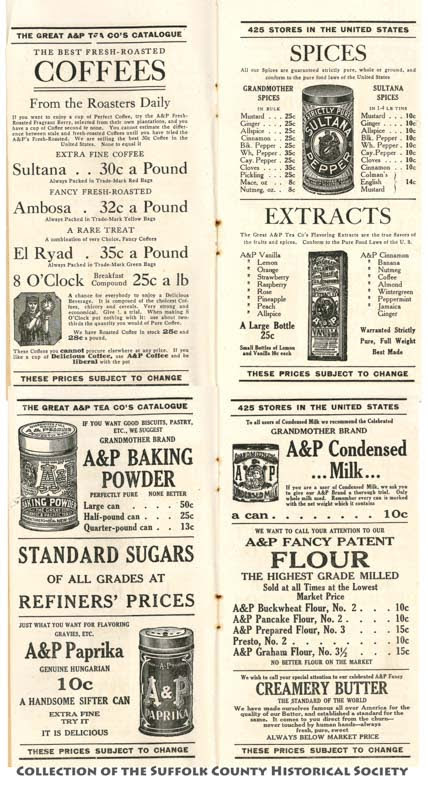
A&P Grocery Catalog, 1913. (From the Collection of the Suffolk County Historical Society Library Archives. Copyright © Suffolk County Historical Society. All rights reserved.)
The Great Atlantic & Pacific Tea Company, more commonly known as A&P, was a U.S. grocery store chain founded in 1859 in New York City that grew to operate stores throughout the country for over 150 years (until 2015). A&P had 425 stores in America in 1913, according to this grocery catalog from our collection. By 1925, however, the chain was operating more than thirteen thousand grocery stores nationwide and employing over forty thousand people.
A&P was a place where most Americans in the modern era grew up shopping. The grocery store chain was able to gain a popularity with consumers that few companies have ever achieved in the United States. No doubt offering a detailed grocery catalog of offerings at fair prices was one of the keys to the company’s long-term success. Here are a few selected examples pulled from the catalog: Kellogg’s Corn Flakes – 10 cents; Maple Syrup, 1 gallon – $1.50; Strawberry Jam, 1 pound – 15 cents; Castile soap – 5 cents a bar; and the popular Eight O’Clock Coffee beans – 25 cents per pound.

******************************************
Visit: www.suffolkcountyhistoricalsociety.org
To View 2014 Photo of the Week pages click here.
To View 2015 Photo of the Week pages click here.
To View 2016 Photo of the Week pages click here.
To View 2017 Photo of the Week pages click here.
To View 2018 Photo of the Week pages click here.
To View 2019 Photo of the Week pages click here.
~~~~~~~~~~~~~~~~~~~~~~~~~~~~~~~~~~~~~~~~
Photo of the Week
———- UPDATE MARCH 28, 2020 ———-
FROM THE SCHS LIBRARY ARCHIVES
“How shall we know it is us without our past?”
– John Steinbeck
——-
WOMEN’S HISTORY MONTH
by Wendy Polhemus-Annibell, Head Librarian
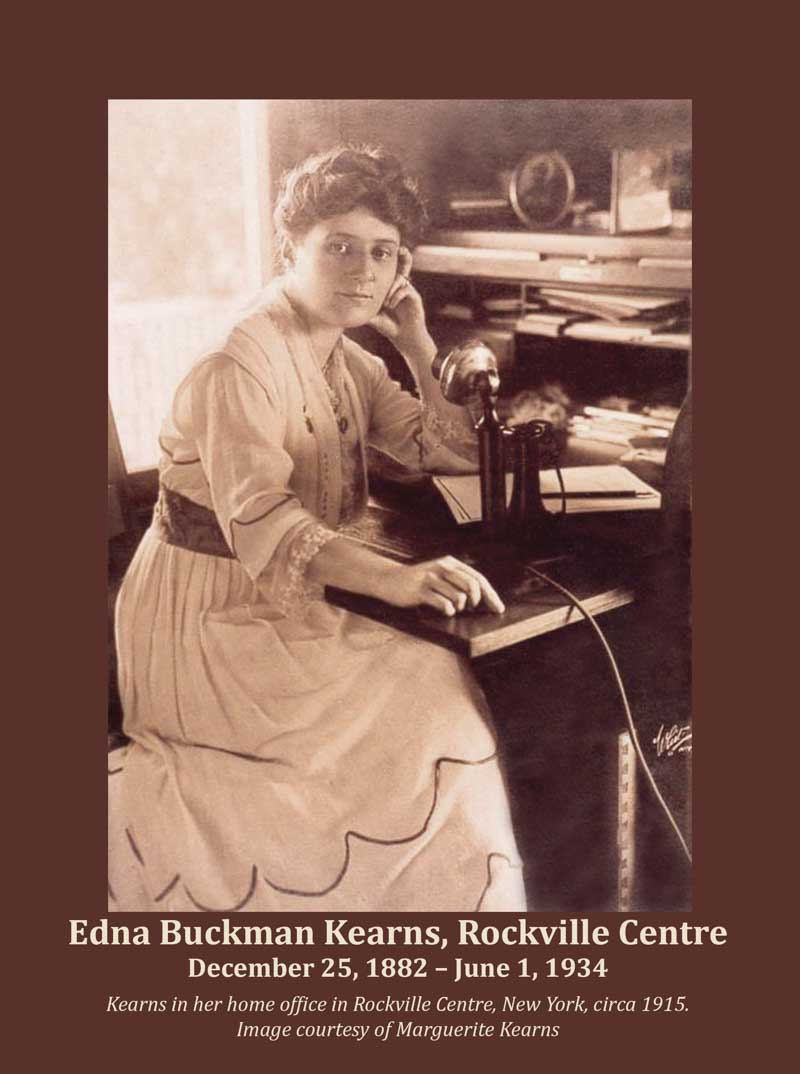
Edna Buckman Kearns in Her Home Office in Rockville Centre, c. 1915. Image courtesy of Marguerite Kearns.
Edna Buckman Kearns was a suffrage activist who worked on the 1915 and 1917 New York campaigns for votes for women, as well as on the National Woman’s Party campaign for the passage and ratification of the 19th Amendment to the U.S. Constitution. She was born in Philadelphia, and as an adult, she moved with her husband to New York in 1904. They lived in both New York City and Rockville Centre. From 1910 to 1920, Kearns was a prominent grassroots suffrage organizer, working intensely as a speaker, press chair for local and state suffrage campaigns, and organizer on Long Island and in New York City. As a writer and speaker on equality and suffrage, Kearns learned newspaper reporting and editing on the fly, writing and editing suffrage news for the Brooklyn Daily Eagle and other New York City papers. She developed close relationships with news editors who published her many columns and reports. During the 1915 New York State suffrage referendum campaign, she relentlessly submitted articles in support of Votes for Women to more than twenty local newspapers.
Kearns is perhaps best known for her horse-drawn “Spirit of 1776” campaign wagon, a suffrage-movement symbol of patriotic protest. In 1913, the Brooklyn carriage company, I.S. Remson, donated an old wagon called Spirit of 1776 to the New York State Woman Suffrage Association. Kearns hitched a horse to the wagon and took off from Manhattan to Long Island in 1913 for suffrage parades, pageants, and special organizing events. Today her historic wagon is in the collection of the New York State Museum.
The women’s suffrage movement remains one of the most remarkable and successful civil rights efforts in our nation’s history, spanning seventy-three years and involving tens of thousands of women activists and their male allies. The year 2020 marks the 100th anniversary of the movement’s great victory, the ratification of the 19th Amendment to the U.S. Constitution in 1920.
******************************************
Visit: www.suffolkcountyhistoricalsociety.org
To View 2014 Photo of the Week pages click here.
To View 2015 Photo of the Week pages click here.
To View 2016 Photo of the Week pages click here.
To View 2017 Photo of the Week pages click here.
To View 2018 Photo of the Week pages click here.
To View 2019 Photo of the Week pages click here.
~~~~~~~~~~~~~~~~~~~~~~~~~~~~~~~~~~~~~~~~
—————————-
BRINDLEY AVIATION FIELD, Commack, 1918
by Wendy Polhemus-Annibell, Head Librarian
Photo of the Week
———- UPDATE MARCH 21, 2020 ———-
FROM THE SCHS LIBRARY ARCHIVES
“How shall we know it is us without our past?”
– John Steinbeck
—————————-
BRINDLEY AVIATION FIELD, Commack, 1918
by Wendy Polhemus-Annibell, Head Librarian

Brindley Aviation Field, Commack, 1918. On the northeast corner of Larkfield Road and Jericho Turnpike in Commack today stands the Home Depot shopping center. However, during World War I, from 1918 to 1919, the site was known as Brindley Field and was home to a squadron of the U.S. Army Air Service.
The airfield, named after Major Oscar Brindley who had died in an aircraft accident in Ohio, occupied nearly a hundred acres of land owned by local farmer William Randall. His home was turned into a headquarters, and the outer buildings were used for storage. Constructed on the property were the flying field, barracks, mess halls, and hangers.
In June of 1918 on a sunny afternoon in Commack, eight-year-old Henry Shea was playing outside by his house on the family farm when he heard the sound of … a dull rumbling roar, slowly growing louder as it approached from the west. Soon he could see a cloud of dust coming down Jericho Turnpike … and then an endless line of army trucks of all different types and sizes appeared … and the line of trucks seemed to go on for half the day right past his house and through the side gates of the Randall’s farm spreading out across the field. To see a car or truck in Commack was still rare at this time and here there was a complete army right across from Henry’s house. He and his mother walked over and, after talking with a few people, they learned that the army was going to build an airfield to train pilots to fight in France….
Join the Facebook group Commack in the 60s and 70s to read the rest of this Shea family farmer’s eyewitness account of Brindley Field:
https://www.facebook.com/
The arrival of Brindley Field brought electricity to the area since the airfield needed power lines to operate. When Brindley was closed after World War I ended, the site was returned to its landowner and the military buildings were destroyed or removed.
******************************************
Visit: www.suffolkcountyhistoricalsociety.org
To View 2014 Photo of the Week pages click here.
To View 2015 Photo of the Week pages click here.
To View 2016 Photo of the Week pages click here.
To View 2017 Photo of the Week pages click here.
To View 2018 Photo of the Week pages click here.
To View 2019 Photo of the Week pages click here.
~~~~~~~~~~~~~~~~~~~~~~~~~~~~~~~~~~~~~~~~
Photo of the Week
———- UPDATE MARCH 14, 2020 ———-
FROM THE SCHS LIBRARY ARCHIVES
“How shall we know it is us without our past?”
– John Steinbeck
The Mulford House, East Hampton
by Wendy Polhemus-Annibell, Head Librarian

The Mulford House in East Hampton. (From the Collection of the Suffolk County Historical Society Library Archives. Image copyright © Suffolk County Historical Society. All rights reserved.)
The Mulford house, built by John Henry Mulford in 1680, when East Hampton was a well-established village, remains largely unchanged since 1750. In addition to its architectural significance, the home has remained in Mulford hands for the majority of its existence. The house has much to tell us about the origins of colonial New England society, and it gives historians the opportunity to trace the Mulford family, their use of the land, and the creation of the surrounding environment.
One ancestor of the Mulfords, Samuel Mulford (1644-1725), was a whaleman and a political reformer who fought successfully against taxation without representation as a member of the Colonial Assembly. He journeyed to London in 1704 and 1725 to protest what he argued was an unfair tax on eastern Long Island whalemen. He was given a hearing and the reforms were enacted.
The entire Mulford Farm, which is listed on the National Register of Historic Places, is considered one of the country’s most significant, intact English colonial farmsteads.
Suggested Reading: Three Centuries in East Hampton, by Jeannette Edwards Rattray, 1937.
******************************************
Visit: www.suffolkcountyhistoricalsociety.org
To View 2014 Photo of the Week pages click here.
To View 2015 Photo of the Week pages click here.
To View 2016 Photo of the Week pages click here.
To View 2017 Photo of the Week pages click here.
To View 2018 Photo of the Week pages click here.
To View 2019 Photo of the Week pages click here.
******************************************
Photo of the Week
———- UPDATE MARCH 7, 2020 ———-
FROM THE SCHS LIBRARY ARCHIVES
“How shall we know it is us without our past?”
– John Steinbeck
The Parry Sisters
by Wendy Polhemus-Annibell, Head Librarian

The Parry Sisters (wearing hats, neckerchiefs, gauntlet gloves, armbands, and velvet costumes). (From the Collection of the Suffolk County Historical Society Library Archives. Image copyright © Suffolk County Historical Society. All rights reserved.)
Sisters Etheyle and Jaunita Parry, daughters of Amy Rothermel Parry and veterinarian Archer E. Parry, were born in Riverhead in 1890 and 1891, respectively. They spent most of their early years in Riverhead, but by the early twentieth-century they would become two of the greatest circus and rodeo stunt horseback riders in the United States.
William “Buffalo Bill” Cody was a personal friend of the family, and in 1907, when the younger Juanita reached age 16, the sisters left Riverhead to join Cody’s Wild West show just before it started on a South American tour. Etheyle and Juanita became known as the Cossack Girls because they performed daring feats of horsemanship attributed to the Russian Cossack cavalry. The sisters fascinated audiences at Buffalo Bill’s Wild West shows from New York to London. They also appeared in Miller Bros. shows and in the Barnum & Bailey Circus. One of the Parry Sisters’ roping and riding routines involved a runaway stagecoach: Etheyle would leap off a vehicle onto a horse running alongside the stage, and Juanita would rope a fixed object from the driver’s seat of the stage to bring the team of horses to an abrupt stop.
The Parry Sisters’ act lasted from 1907 to 1918, when, sadly, Juanita died after falling off her horse and breaking her neck at a Barnum & Bailey show. Etheyle married William Cody Bradford, a nephew of Buffalo Bill.
Don’t miss our Women’s History Month Exhibit: The Parry Sisters, Suffolk County in the Wild West. From our permanent collection, assorted costumes, beads, photographs, and other items showcase the story of circus performers Etheyle and Juanita Parry of Riverhead, two of the greatest stunt horseback riders in the country at the turn of the 20th century. In our History in the Hall display cases beginning March 11, 2020.
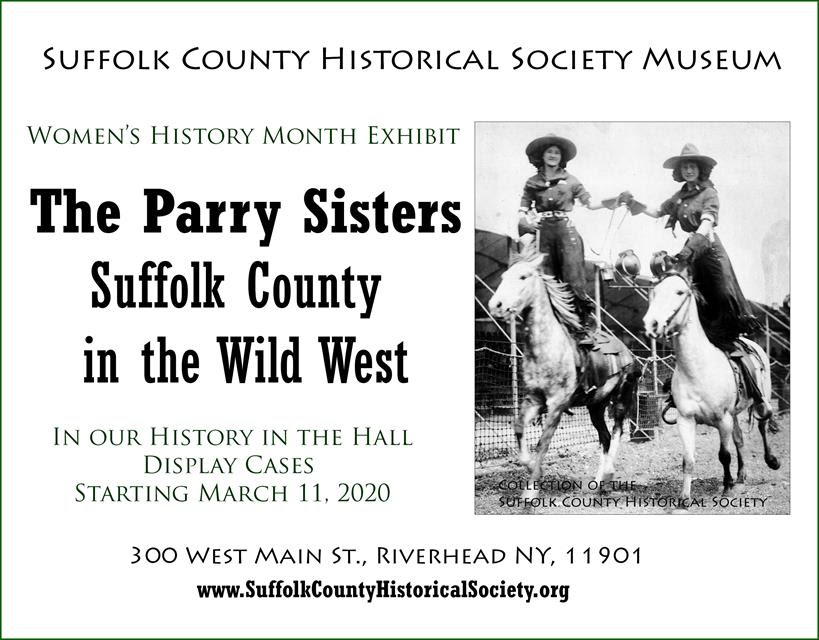
******************************************
Visit: www.suffolkcountyhistoricalsociety.org
To View 2014 Photo of the Week pages click here.
To View 2015 Photo of the Week pages click here.
To View 2016 Photo of the Week pages click here.
To View 2017 Photo of the Week pages click here.
To View 2018 Photo of the Week pages click here.
To View 2019 Photo of the Week pages click here.
******************************************
Photo of the Week
———- UPDATE FEBRUARY 29, 2020 ———-
FROM THE SCHS LIBRARY ARCHIVES
“How shall we know it is us without our past?”
– John Steinbeck
HELEN KELLER
by Wendy Polhemus-Annibell, Head Librarian

Riverhead Woman’s Club Treasurer’s Account Book Record, February 13, 1933: “Proceeds from Helen Keller Benefit…$307.46.” (From the Collection of the Suffolk CountyHistorical Society Library Archives. Image copyright © SuffolkCounty Historical Society. All rights reserved.)
In February 1933, due to the good work of the Woman’s Club of Riverhead, the people were privileged to see and hear Hellen Keller, the famous blind and deaf woman, in the Riverhead High School Auditorium. Miss Keller came to deliver some of her inspirational lectures. No admission was charged, but contributions were accepted. Mrs. George E. Pugsley, president of the Woman’s Club, noted in the Treasurer’s Account Book that $307.46 was collected in cash, checks, and pledges. In addition to Miss Keller’s address, the program featured violin solos by Miss Bessie Wells and vocal selections by Alton Medager, baratone.
“It is said of Miss Keller that she is a brilliant example of what may be accomplished in spite of physical handicaps–she has demonstrated how even physical infirmities add no barrier to a life of happiness and accomplishment” (The Riverhead News, February 10, 1933).
******************************************
Visit: www.suffolkcountyhistoricalsociety.org
To View 2014 Photo of the Week pages click here.
To View 2015 Photo of the Week pages click here.
To View 2016 Photo of the Week pages click here.
To View 2017 Photo of the Week pages click here.
To View 2018 Photo of the Week pages click here.
To View 2019 Photo of the Week pages click here.
~~~~~~~~~~~~~~~~~~~~~~~~~~~~~~~~~~~~~~~~
Photo of the Week
———- UPDATE FEBRUARY 22, 2020 ———-
FROM THE SCHS LIBRARY ARCHIVES
“How shall we know it is us without our past?”
– John Steinbeck
BLACK HISTORY MONTH
by Wendy Polhemus-Annibell, Head Librarian

Gabriel Mills of Riverhead Records the Birth of a Slave Boy and Girl, 1814. (From the Collection of the Suffolk CountyHistorical Society Library Archives. Image copyright © SuffolkCounty Historical Society. All rights reserved.)
The document reads:
A nigner Boy Silas was born September 5 1814.
A nigger girl Lil was born November 22 1814.
Gabriel Mills
Slavery was officially abolished in New York State in 1827, less than 200 years ago. In 1698, some 1,100 slaves called “bondsman” resided on Long Island; 10 percent of the population of Southampton was enslaved at this time. In 1749, some 3,400 slaves resided on Long Island; and in 1775, on the eve of the American Revolution, there were 5,000 slaves.
Manumissions (the freeing of slaves) increased during and after the Revolution. In 1788, a manumission law was enacted that provided for freeing slaves but protected those who were elderly or ill from being freed without adequate provisions for their care. New York declared that all children born of slaves after July 4, 1799, were free, though the owners could retain the male child’s service until age 28 and the female’s until age 25. However, the slaveowner could also elect to abandon his claim to the child’s service and pass the responsibility for supporting the child to the state.
A state law enacted in 1817 provided that by 1827 all slaves in New York would be considered free.
******************************************
Visit: www.suffolkcountyhistoricalsociety.org
To View 2014 Photo of the Week pages click here.
To View 2015 Photo of the Week pages click here.
To View 2016 Photo of the Week pages click here.
To View 2017 Photo of the Week pages click here.
To View 2018 Photo of the Week pages click here.
To View 2019 Photo of the Week pages click here.
~~~~~~~~~~~~~~~~~~~~~~~~~~~~~~~~~~~~~~~~
Photo of the Week
———- UPDATE FEBRUARY 14, 2020 ———-
FROM THE SCHS LIBRARY ARCHIVES
“How shall we know it is us without our past?”
– John Steinbeck
TO MY VALENTINE
by Wendy Polhemus-Annibell, Head Librarian

“To My Valentine” Postcard, Riverhead, 1910. (From the Collection of the Suffolk County Historical Society Library Archives. Image copyright © Suffolk County Historical Society. All rights reserved.)
This postcard from our collection was sent anonymously on the morning of Valentine’s Day 1910, from the Rivehead Post Office, to Miss Allamay Hallock of Sound Avenue in Riverhead.
Valentine’s Day is celebrated in Canada, Mexico, the United Kingdom, France, Australia, and the United States. Americans probably began exchanging hand-made valentines in the early 1700s. In the 1840s, Esther A. Howland began selling the first mass-produced valentines in America. Known as the “Mother of the Valentine,” Howland made elaborate creations with lace, ribbons, and colorful pictures known as “scrap.” Ready-made cards became an easy way for people to express their emotions at a time when direct expression of one’s feelings was discouraged. Cheaper postage rates and the one-cent postcard era at the turn of the twentieth century also contributed to an increase in the popularity of sending Valentine’s Day greetings.
******************************************
Visit: www.suffolkcountyhistoricalsociety.org
To View 2014 Photo of the Week pages click here.
To View 2015 Photo of the Week pages click here.
To View 2016 Photo of the Week pages click here.
To View 2017 Photo of the Week pages click here.
To View 2018 Photo of the Week pages click here.
To View 2019 Photo of the Week pages click here.
~~~~~~~~~~~~~~~~~~~~~~~~~~~~~~~~~~~~~~~~
Photo of the Week
———- UPDATE FEBRUARY 8, 2020 ———-
FROM THE SCHS LIBRARY ARCHIVES
“How shall we know it is us without our past?”
– John Steinbeck
CENTER MORICHES HIGH SCHOOL, EARLY 1900s
by Wendy Polhemus-Annibell, Head Librarian

Center Moriches High School Students at Games and Exercises, early 1900s. (From the Collection of the Suffolk County Historical Society Library Archives. Image copyright © Suffolk County Historical Society. All rights reserved.)
According to a 1911 Center Moriches High School pamphlet in our library collection, the Center Moriches School was, prior to 1897, an ungraded school employing two teachers. A new school building was constructed and occupied by 1898, and at that time the number of teachers was increased to four. Three other teachers were added between 1903 and 1909, after which the school was raised to the grade of high school.
The new Center Moriches High School building was located on three acres on the north side of Main Street. The school grounds featured a well-kept lawn, a large playground, space for school gardens, and ample room for games and sports for the students to participate in. The school library, which contained 1,200 volumes, was open two days a week to all students and district residents.
Here is the 1911-1912 Center Moriches High School Calendar:
- Sept. 11 – First Day of School
- Oct. 12 – Columbus Day Holiday
- Nov. 7 – Election Day Holiday
- Nov. 30 – Dec. 1 – Thanksgiving Recess
- Dec. 23 – Jan. 3 – Christmas Vacation
- Jan. 15-19 – Regents Examinations
- Feb. 12 – Lincoln’s Birthday
- Feb. 22 – Washington’s Birthday
- April 6-15: Easter Vacation
- May 3: Arbor Day Holiday
- May 30 – Memorial Day Holiday
- June 17-21 – Regents Examinations
- June 25: Commencement Exercises
-
******************************************
Visit: www.suffolkcountyhistoricalsociety.org
To View 2014 Photo of the Week pages click here.
To View 2015 Photo of the Week pages click here.
To View 2016 Photo of the Week pages click here.
To View 2017 Photo of the Week pages click here.
To View 2018 Photo of the Week pages click here.
To View 2019 Photo of the Week pages click here.
~~~~~~~~~~~~~~~~~~~~~~~~~~~~~~~~~~~~~~~~
Photo of the Week
———- UPDATE FEBRUARY 1, 2020 ———-
FROM THE SCHS LIBRARY ARCHIVES
“How shall we know it is us without our past?”
– John Steinbeck
ICE SKATING, BELMONT LAKE STATE PARK
by Wendy Polhemus-Annibell, Head Librarian
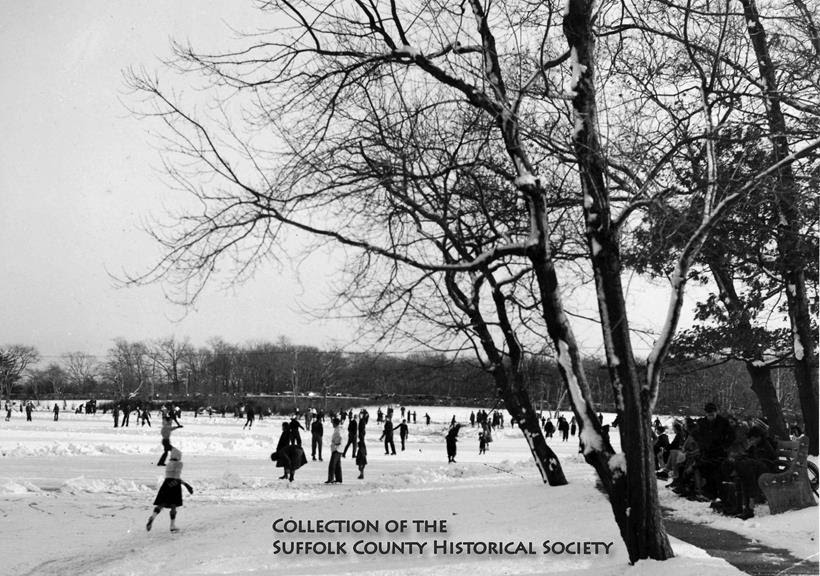
Winter Ice Skating, Probably Belmont Lake State Park (undated photo). (From the Collection of the Suffolk County Historical Society Library Archives. Image copyright © Suffolk County Historical Society. All rights reserved.)
—————
Established in 1926 on land that was formerly part of a thoroughbred horse farm owned by August Belmont, namesake of the Belmont Stakes, Belmont Lake State Park occupies over 400 acres in North Babylon. In 1935, the park was selected by Robert Moses, as the regional headquarters for all state parks on Long Island. It has also served as the headquarters for the Long Island State Park Commission and Long Island State Parkway Police from the 1940s to about 1980. The park now serves as the headquarters of the Long Island region of the New York State Office of Parks, Recreation, and Historic Preservation.
Although this photograph came to us alongside several other Belmont Lake State Park images, we are not 100 percent certain it depicts Belmont Lake. Comments and corrections are encouraged.
******************************************
Visit: www.suffolkcountyhistoricalsociety.org
To View 2014 Photo of the Week pages click here.
To View 2015 Photo of the Week pages click here.
To View 2016 Photo of the Week pages click here.
To View 2017 Photo of the Week pages click here.
To View 2018 Photo of the Week pages click here.
To View 2019 Photo of the Week pages click here.
~~~~~~~~~~~~~~~~~~~~~~~~~~~~~~~~~~~~~~~~
Photo of the Week / January 25, 2020
FROM THE SCHS LIBRARY ARCHIVES
“How shall we know it is us without our past?”
– John Steinbeck
DAR Application Papers
by Wendy Polhemus-Annibell, Head Librarian
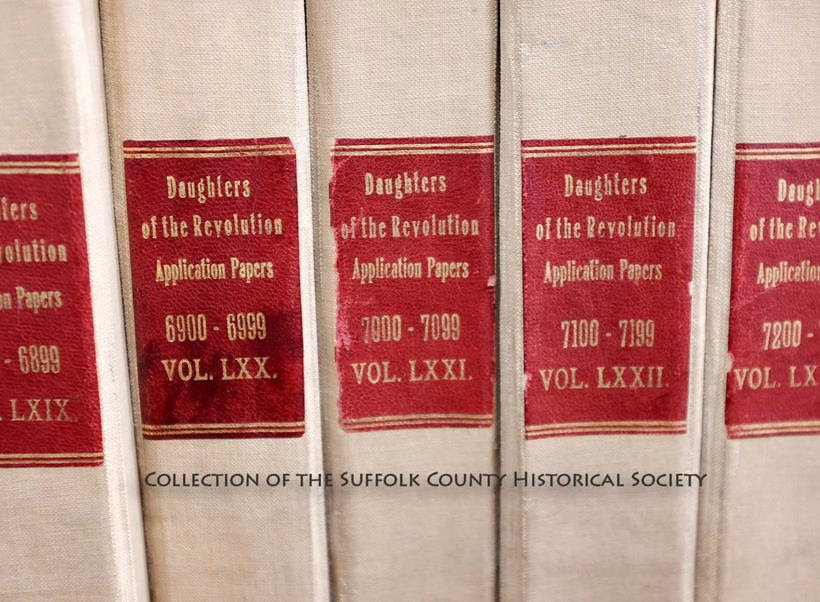
Daughters of the Revolution Application Papers. (From the Collection of the Suffolk County Historical Society Library Archives. Image copyright © Suffolk County Historical Society. All rights reserved.)
The National Society of the Daughters of the Revolution (known as the “D of R”) was organized in 1891 after a difference of opinion within the Daughters of the American Revolution (DAR) arose over membership qualifications. The D of R was incorporated under the laws of the State of New York as an organization national in its work and purpose. The objectives of the society were stated in its constitution as follows: “To perpetuate the patriotic spirit of the men and women who achieved American Independence; to commemorate prominent events connected with the War of the Revolution; to collect, publish, and preserve the rolls, records, and historic documents relating to that period; to encourage the study of the country’s history; and to promote sentiments of friendship and common interest among the members of the Society.”
A woman was eligible for D of R membership if she was above the age of eighteen and was descended from an ancestor who “assisted in establishing American Independence during the War of the Revolution, as a military or naval officer, a soldier or a sailor, an official in the service of any of the thirteen original Colonies or of the United Colonies or States or of Vermont; a member of a committee of Correspondence or of Public Safety, or a recognized patriot who rendered material service in the cause of American Independence.”
When the National Society of the Daughters of the Revolution disbanded in 1983, the Suffolk County Historical Society Library Archives became the official repository of its national membership records and other materials. An online index to our D of R application papers is available for searching on the website of the German Genealogy Group. These records, which contain a wealth of genealogical information, are available for viewing in our library archives during operating hours (Weds. – Sat., 12:30 pm – 4:30 pm). Come take a look! You never know what historic surprises you might find!
******************************************
Visit: www.suffolkcountyhistoricalsociety.org
To View 2014 Photo of the Week pages click here.
To View 2015 Photo of the Week pages click here.
To View 2016 Photo of the Week pages click here.
To View 2017 Photo of the Week pages click here.
To View 2018 Photo of the Week pages click here.
To View 2019 Photo of the Week pages click here.
~~~~~~~~~~~~~~~~~~~~~~~~~~~~~~~~~~~~~~~~
Photo of the Week / January 18, 2020
FROM THE SCHS LIBRARY ARCHIVES
“How shall we know it is us without our past?”
– John Steinbeck
POSTMARKS, SUFFOLK COUNTY, 1910 – 1913
by Wendy Polhemus-Annibell, Head Librarian
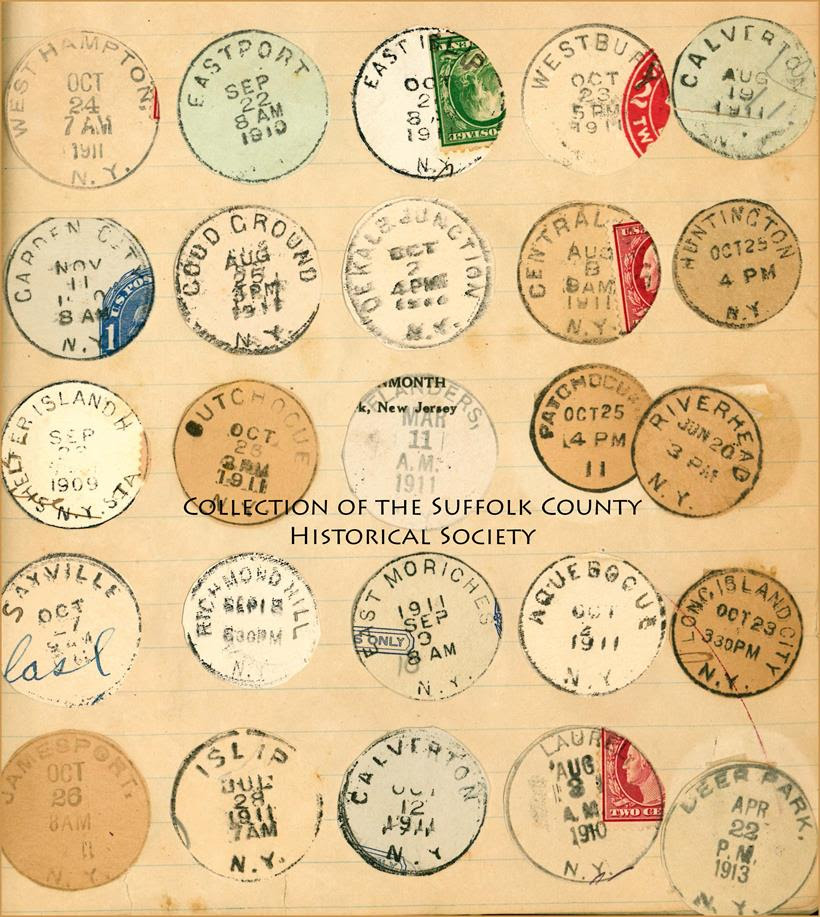
Westhampton, Eastport, Good Ground, Huntington, Cutchogue, Riverhead, Sayville, Laurel, Islip, and Calverton are among the postmarks, or postal cancellations, in this image from our Postal Service Collection. Some other interesting items within this historic collection include inventories from the 1800s of the postmasters of Riverhead (1887-1892), a list of money orders issued by the Flanders Post Office (1908-1928), and published lists of post offices in operation in the mid-1800s and the names of their postmasters.
The collection also includes documents related to an old post office known as “Success.” It existed in the Northville section of Riverhead town from 1838 to 1880. When the residents of Northville sought a post office in 1838, they were informed that a Northville post office already existed in upstate New York, so they chose the name Success instead. Postmasters at the time were presidential political appointees and usually changed along with the administration in Washington, DC. The postmasters of the Success Post Office included a woman (Melinda Corwin) and a civil war veteran (Elisha Wells):
1838 – Benjamin E. Warner
1840 – John Luce
1854 – Jabez Corwin
1861 – Melinda Corwin
1870 – James H. Corwin
1870 – Elisha Wells
1871 – James H. Wells
******************************************
Visit: www.suffolkcountyhistoricalsociety.org
To View 2014 Photo of the Week pages click here.
To View 2015 Photo of the Week pages click here.
To View 2016 Photo of the Week pages click here.
To View 2017 Photo of the Week pages click here.
To View 2018 Photo of the Week pages click here.
To View 2019 Photo of the Week pages click here.
~~~~~~~~~~~~~~~~~~~~~~~~~~~~~~~~~~~~~~~~
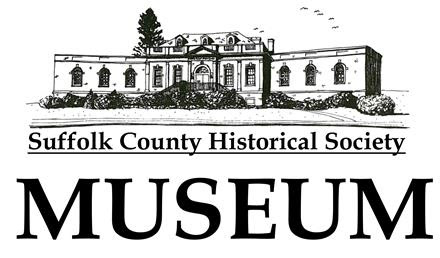
_____________________________________
Photo of the Week / January 11, 2020
FROM THE SCHS LIBRARY ARCHIVES
“How shall we know it is us without our past?”
– John Steinbeck
THIRD HOUSE, MONTAUK
by Wendy Polhemus-Annibell, Head Librarian
Third House, Montauk, 1897. (From the Harry T. Tuthill Fullerton Collection of the Suffolk County Historical Society Library Archives. Copyright © Suffolk County Historical Society. All rights reserved.)
[To view Fullerton photograph, please visit www.suffolkcountyhistoricalsociety.org]
Located near Montauk Point and the Montauk Lighthouse, the original Third House was built in 1797 in Montauk, and then was rebuilt in circa 1806. It was one of three early houses in Montauk that were occupied by town-appointed overseers of livestock herds on Indian Field. The keepers of the herds were appointed annually by East Hampton Town trustees, and the arduous service was considered an honor. In the early 1800s, about six thousand sheep and cattle were grazing on Montauk pastures each summer.
By the summer of 1898, however, the land at Indian Field was dotted not with cattle but with the white tents of the U.S. Army during the Spanish American War. Third House became the headquarters for Col. Theodore Roosevelt, and nearly 30,000 soldiers were quarantined in camps sited on the hills and plains of Montauk to recuperate from wounds and disease. It was on the porch of Third House that Roosevelt learned of his nomination for the governorship of New York.
Third House still stands today and is currently the site of a nature center located at 1929 Montauk Highway, within the Theodore Roosevelt County Park.
Suggested Reading: East Hampton: A History and Guide, by Jason Epstein and Elizabeth Barlow (Wainscott, NY: Medway Press, 1975).

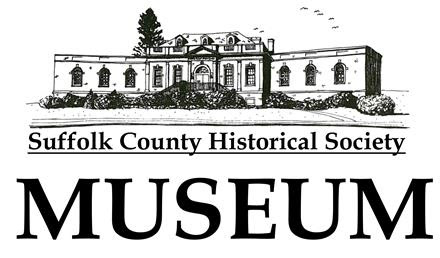
******************************************
Visit: www.suffolkcountyhistoricalsociety.org
To View 2014 Photo of the Week pages click here.
To View 2015 Photo of the Week pages click here.
To View 2016 Photo of the Week pages click here.
To View 2017 Photo of the Week pages click here.
To View 2018 Photo of the Week pages click here.
To View 2019 Photo of the Week pages click here.
~~~~~~~~~~~~~~~~~~~~~~~~~~~~~~~~~~~~~~~~
Photo of the Week / January 3, 2020
FROM THE SCHS LIBRARY ARCHIVES
“How shall we know it is us without our past?”
– John Steinbeck
The Famous Long Island Potato
by Wendy Polhemus-Annibell, Head Librarian

The Famous Long Island Potato (on a Long Island Railroad Train). (From the Riverhead Pictorial Collection of the Suffolk County Historical Society Library Archives. Copyright © Suffolk County Historical Society. All rights reserved.)
Long Island–site of the nation’s oldest potato-growing industry–has a history with potatoes dating back to at least the 1800s. According to Suffolk County historian Morton Pennypacker, however, the cultivation of the potato may date back to 1637, when Lion Gardiner reportedly planted the first white potatoes on Gardiner’s Island.
Potato production on Long Island peaked in the late 1940s with over 70,000 acres grown by many hundreds of Long Island potato farmers. By the 1950s, Suffolk County ranked third among counties nationwide in potato production, and by 1963, the Potato Association of America was holding its 50th Anniversary celebration at Riverhead’s Perkins Hotel.
Long Island horticulturalist Edith Loring Fullerton explained in How to Make a Vegetable Garden (Doubleday, 1905) that the best potato crop is obtained by planting sections of the potato that have three eyes. Favorite potato varieties on Long Island at the turn of the twentieth century were Green Mountain, Rural New Yorker, Early Rose, and Gold Coin.
———————————————-

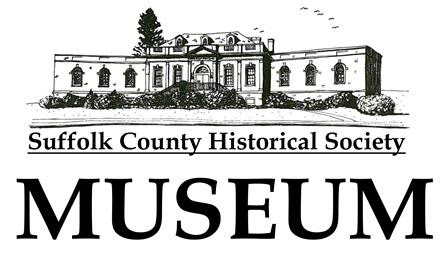
******************************************
Visit: www.suffolkcountyhistoricalsociety.org
To View 2014 Photo of the Week pages click here.
To View 2015 Photo of the Week pages click here.
To View 2016 Photo of the Week pages click here.
To View 2017 Photo of the Week pages click here.
To View 2018 Photo of the Week pages click here.
To View 2019 Photo of the Week pages click here.
~~~~~~~~~~~~~~~~~~~~~~~~~~~~~~~~~~~~~~~~

——————
===========================================

AAQ Resource: Riverhead Bay Motors
_______________________________________________________

